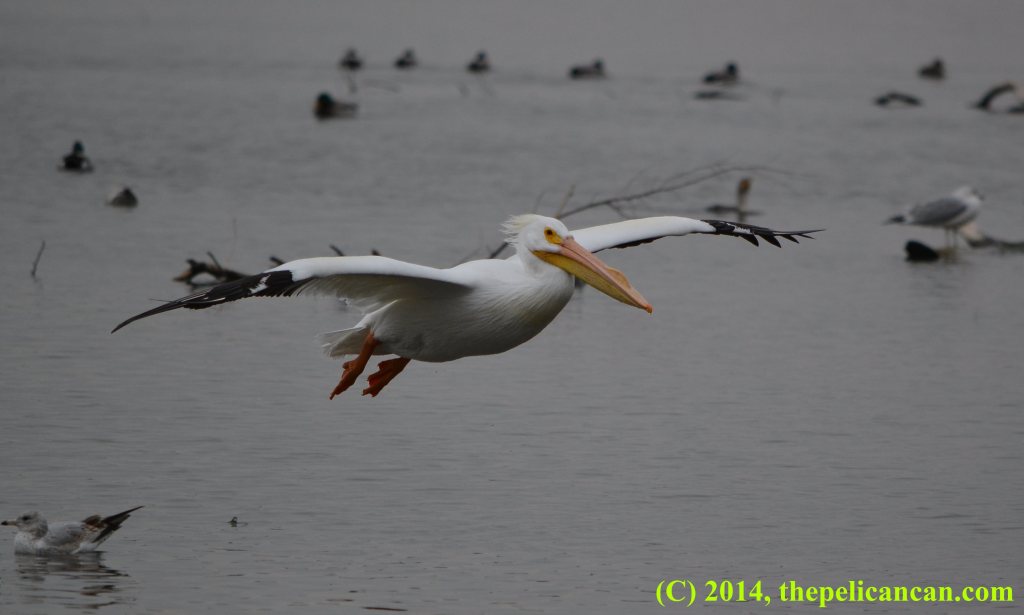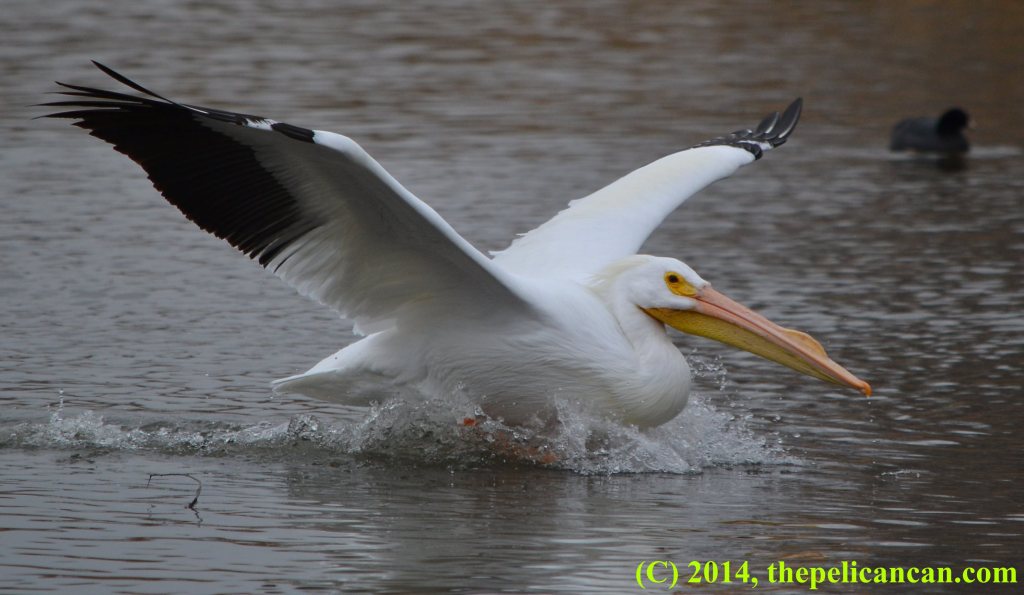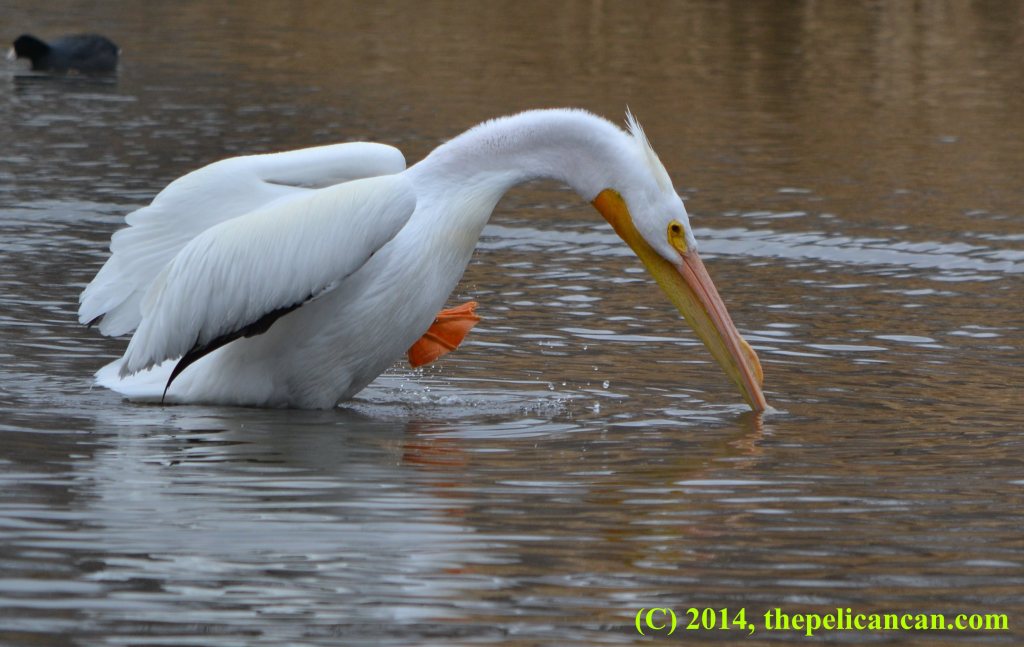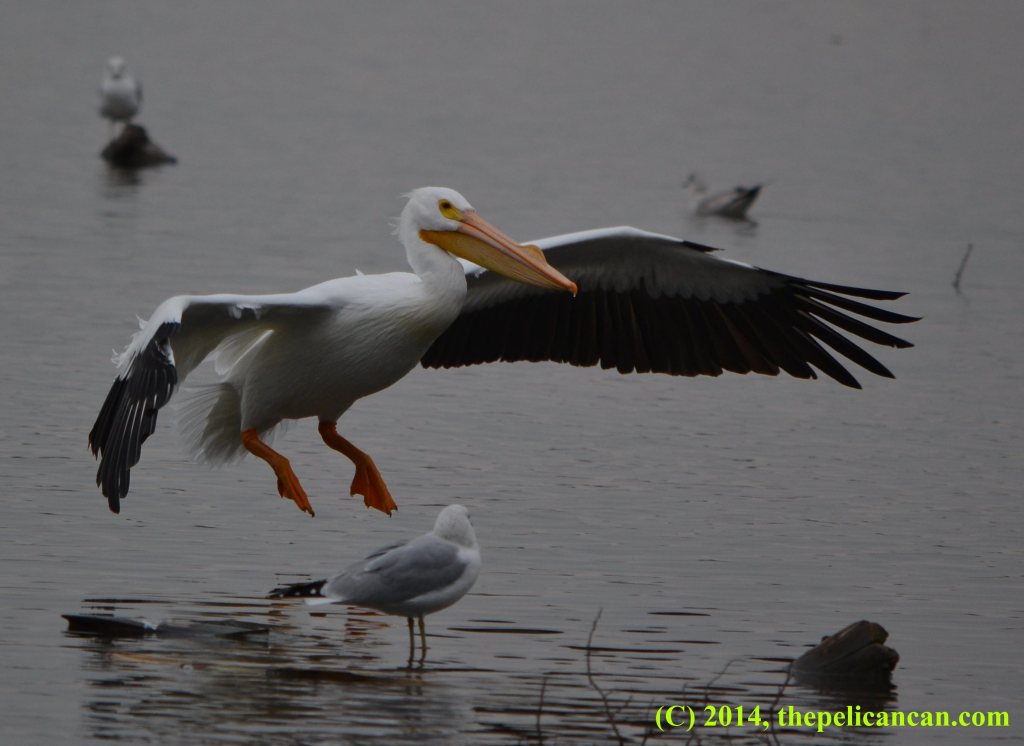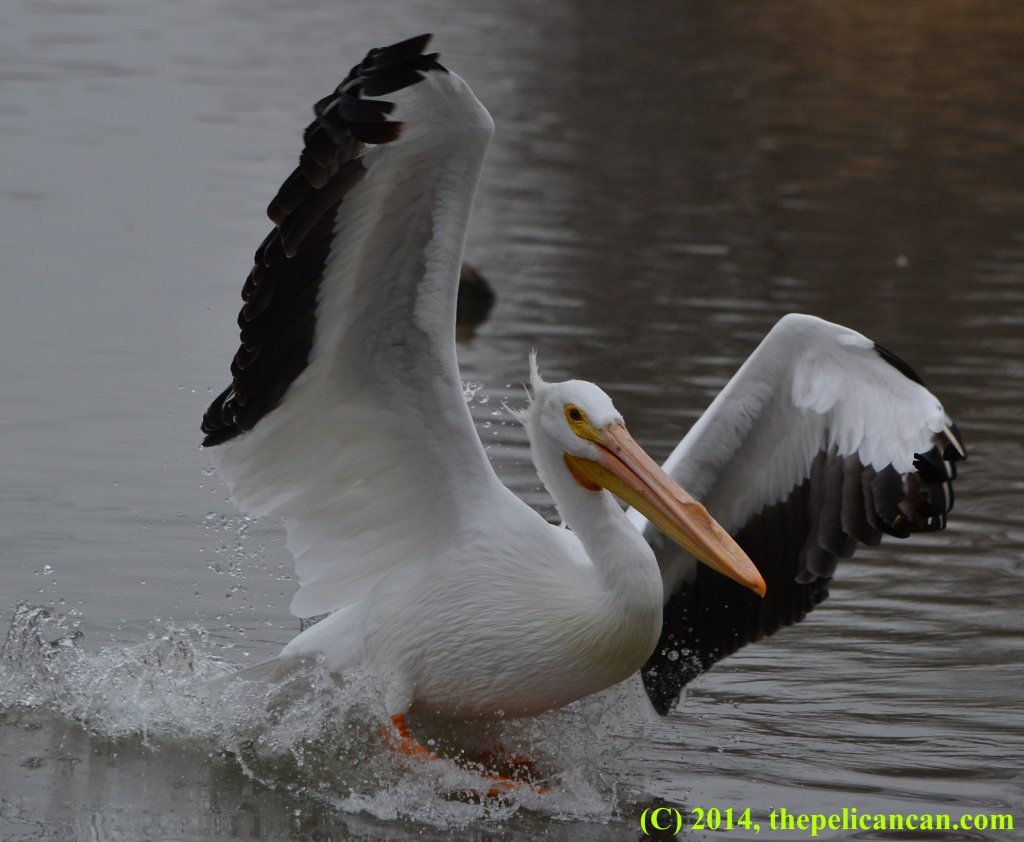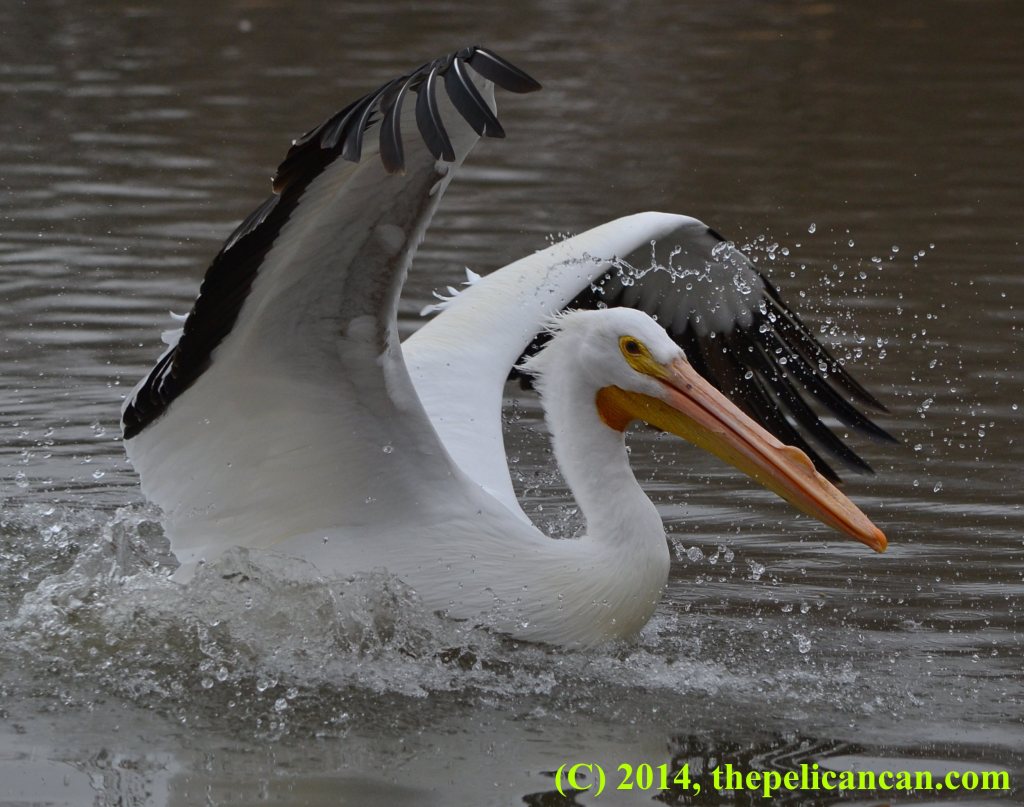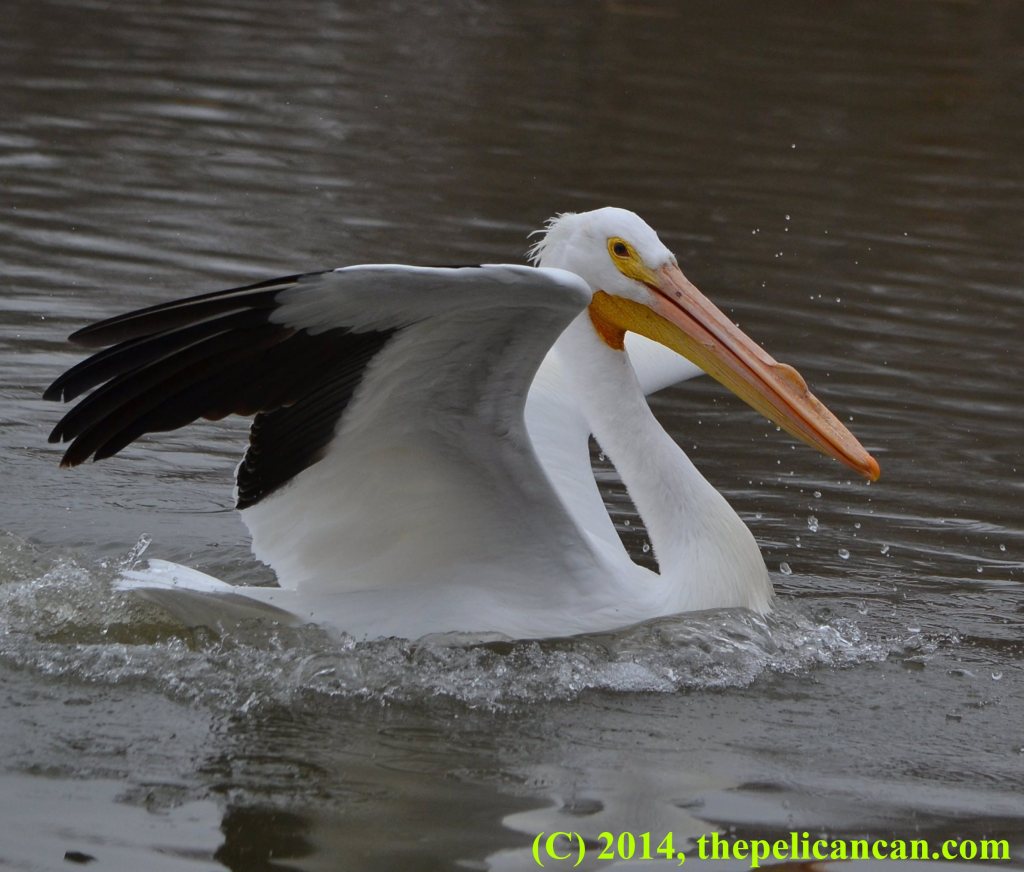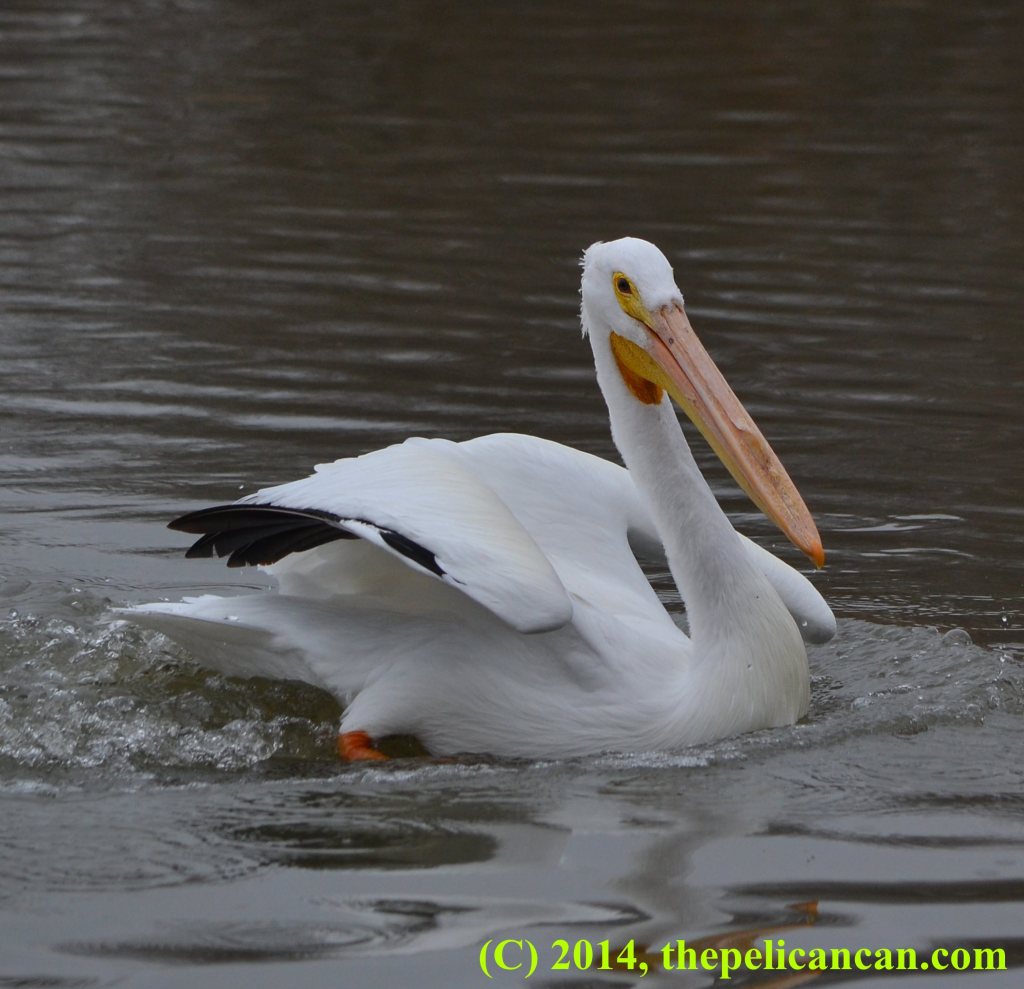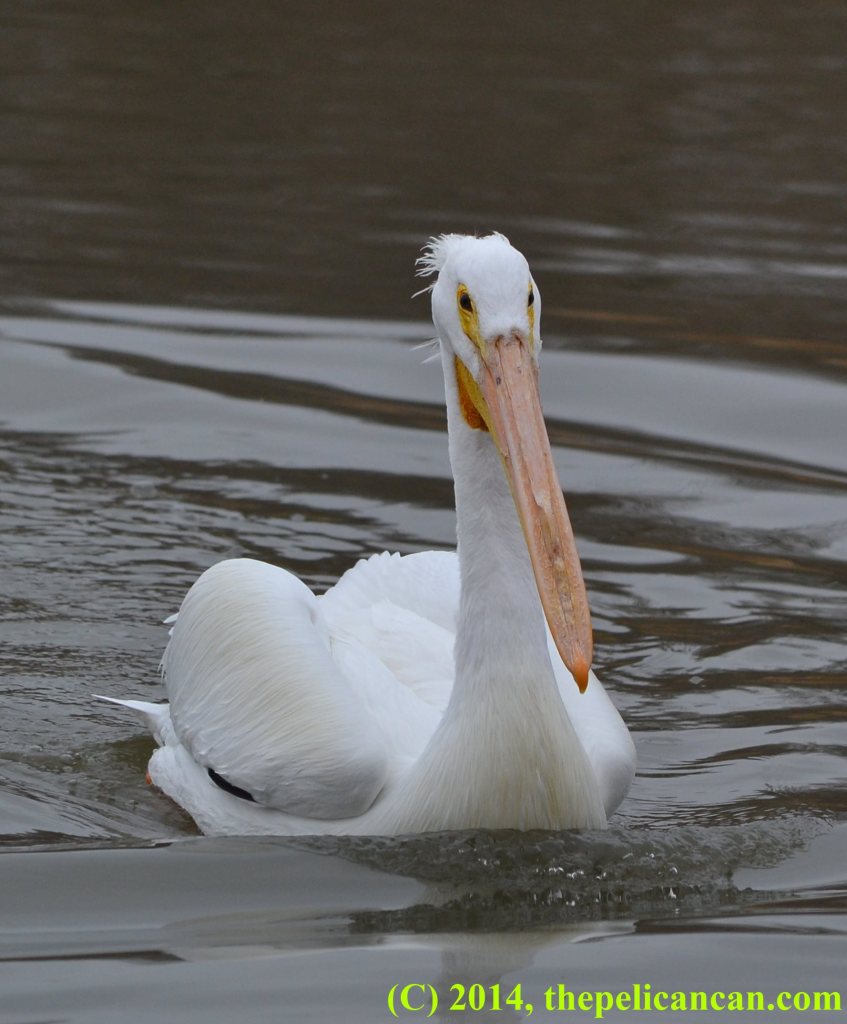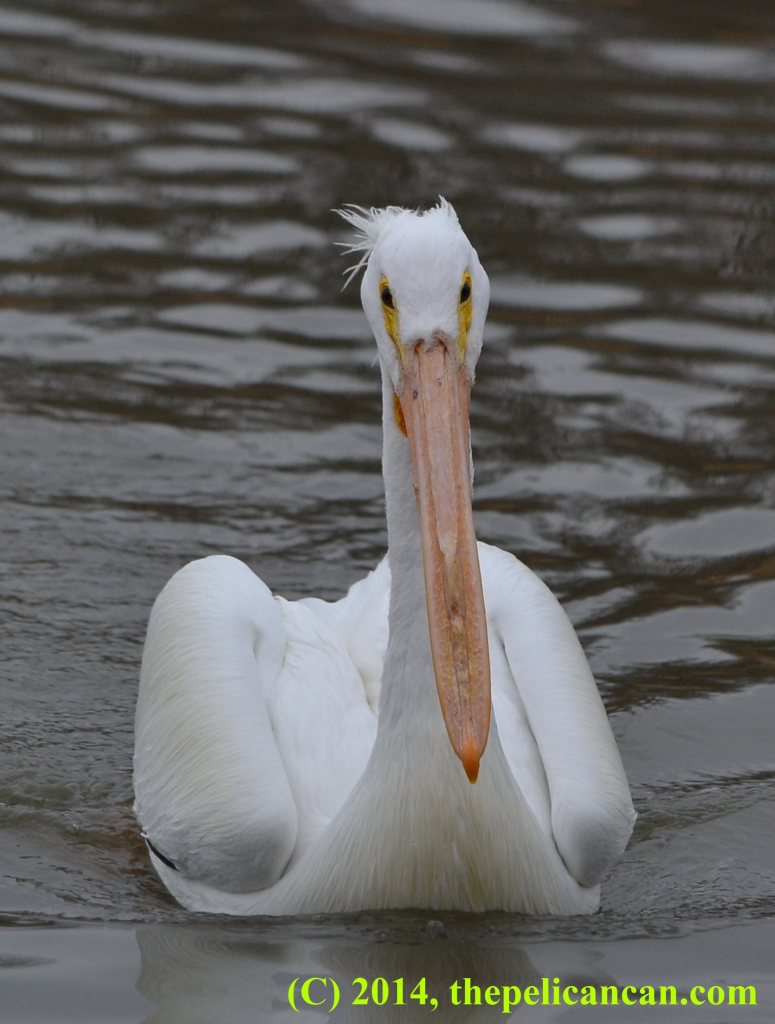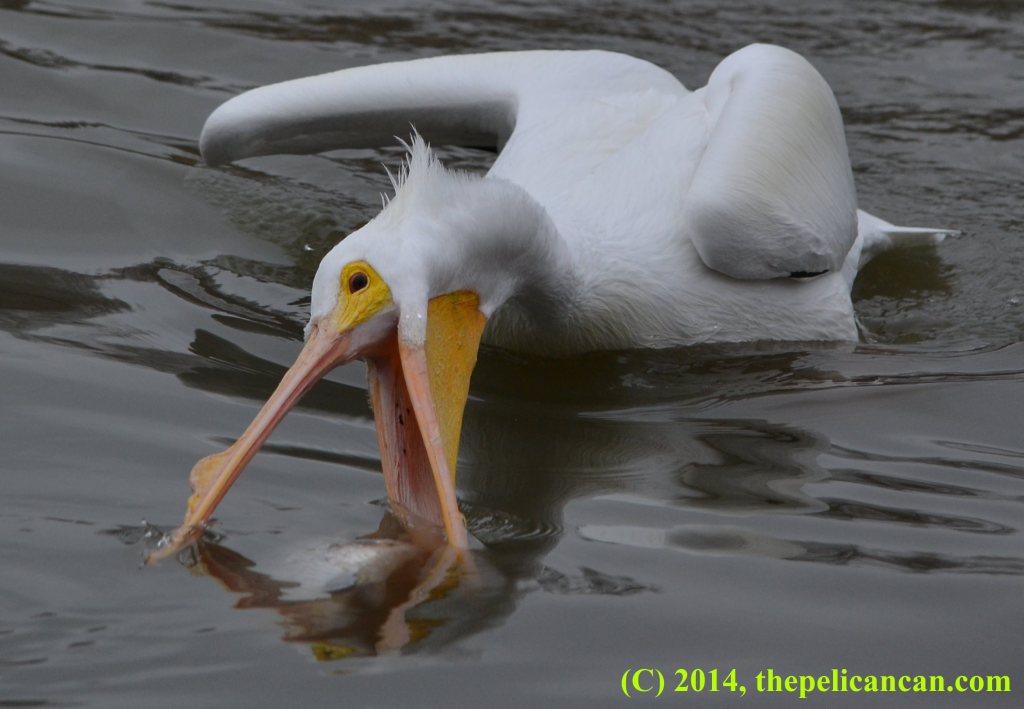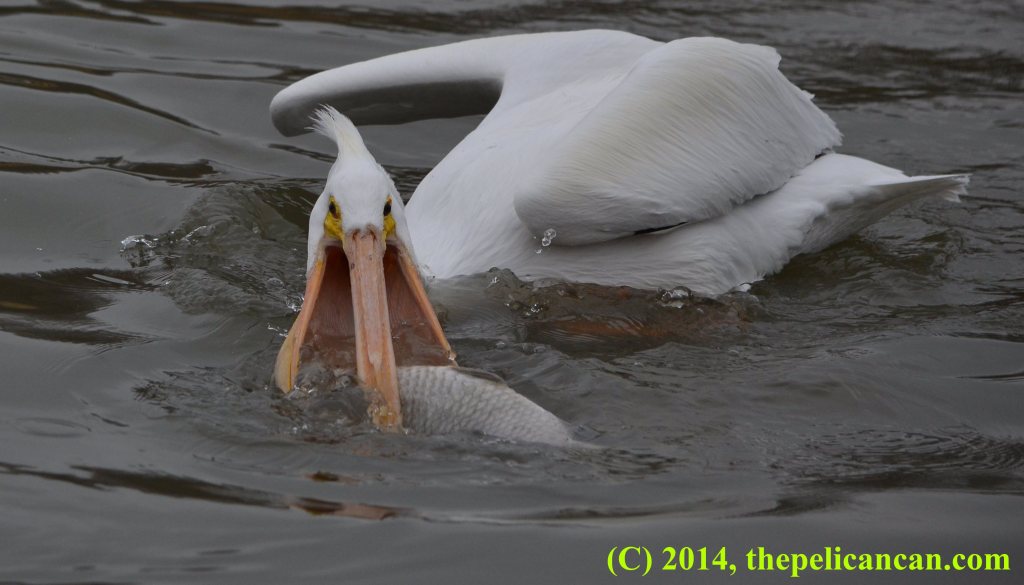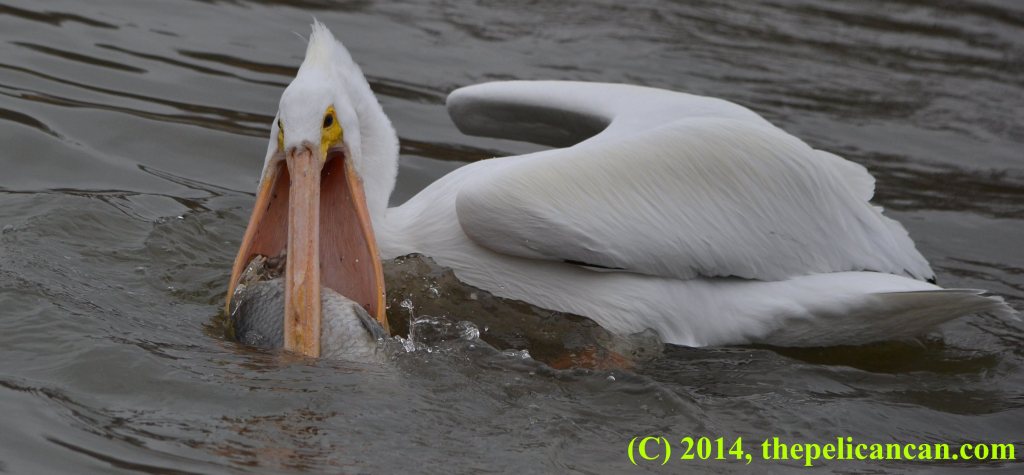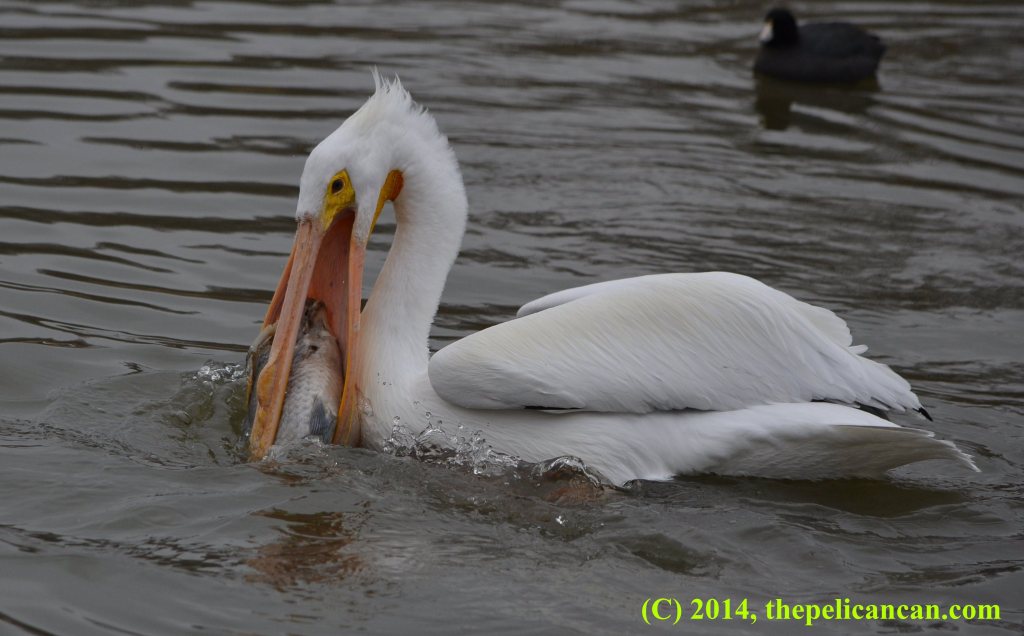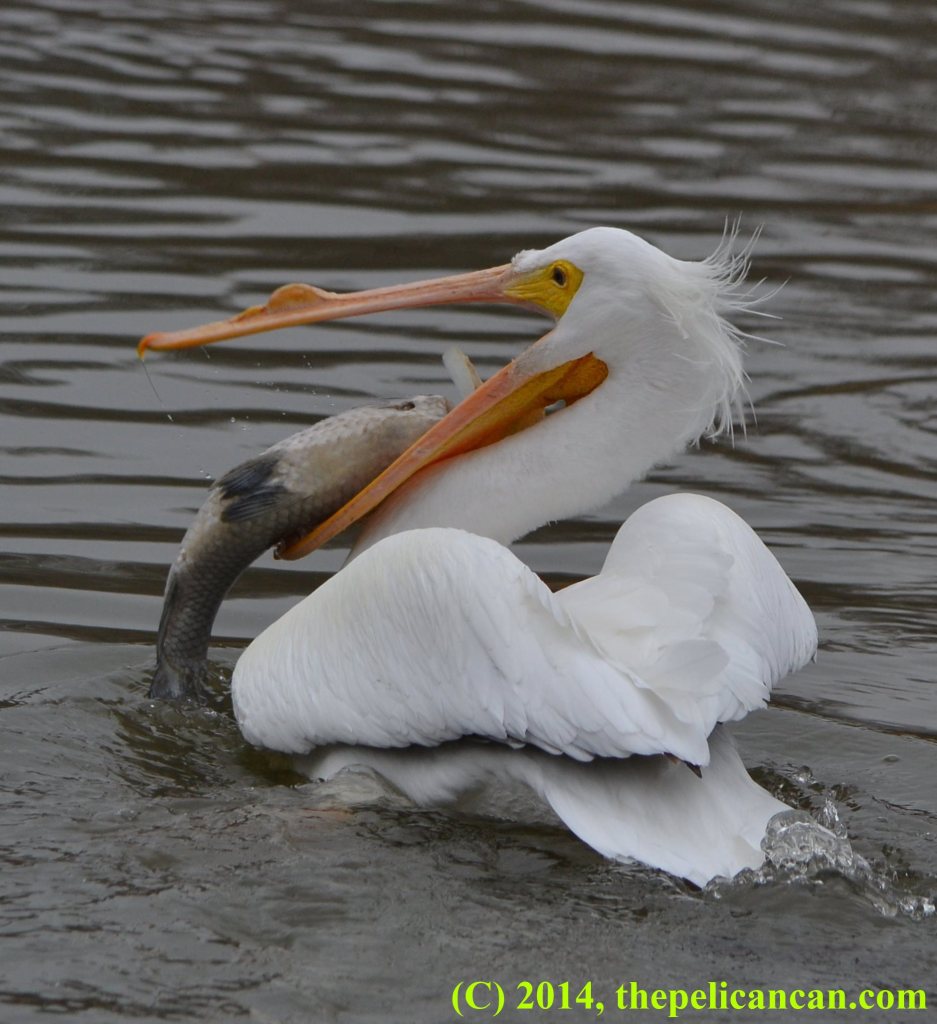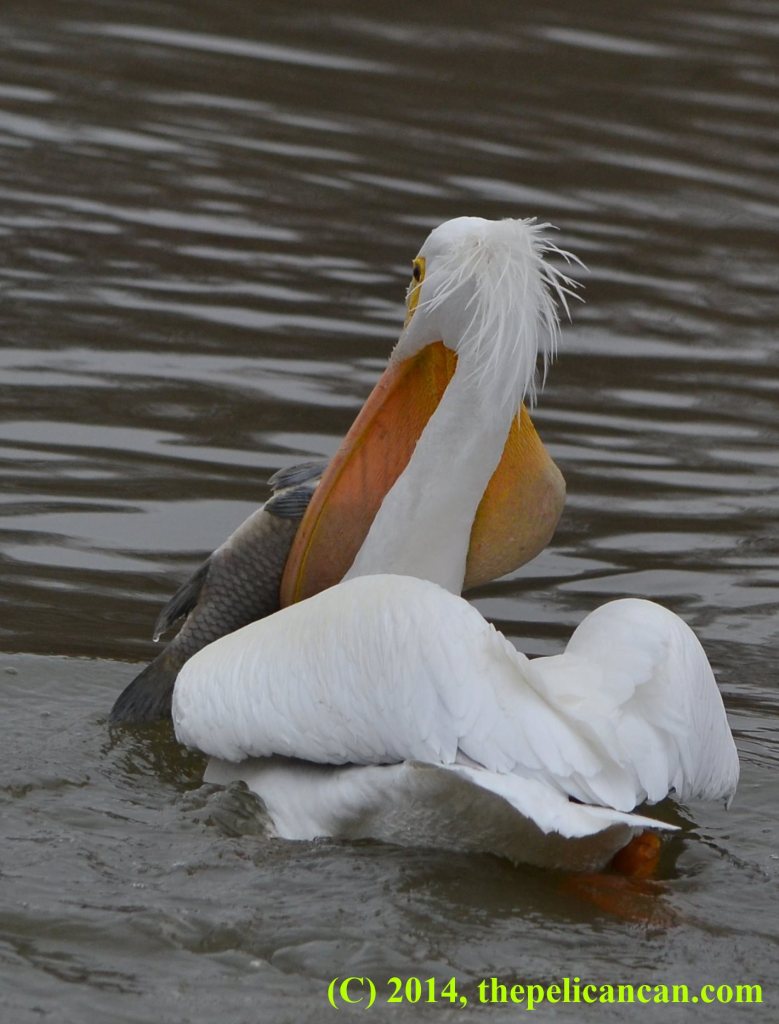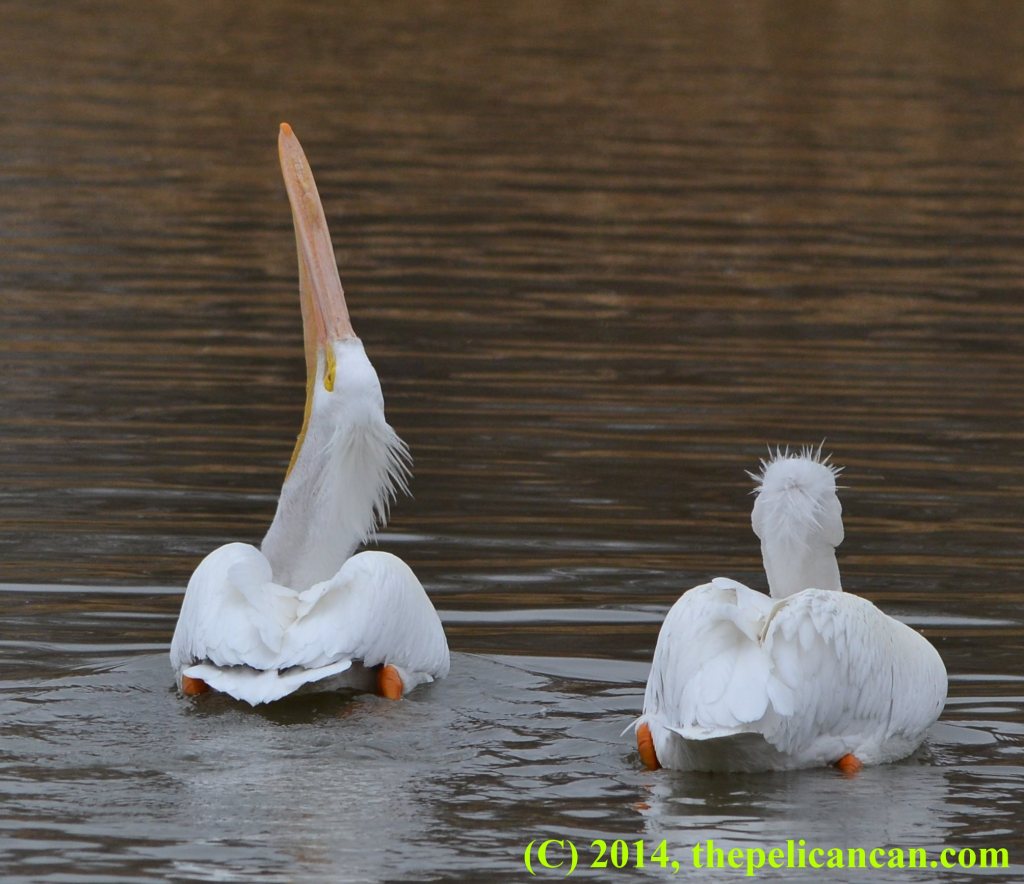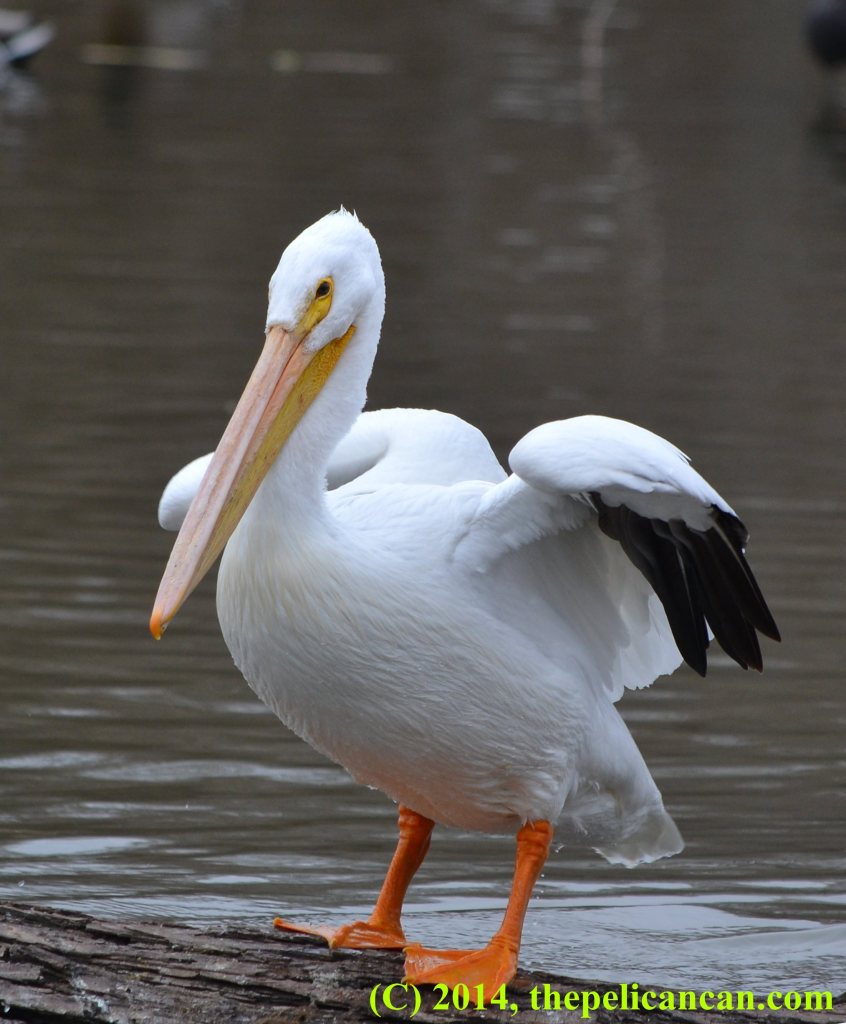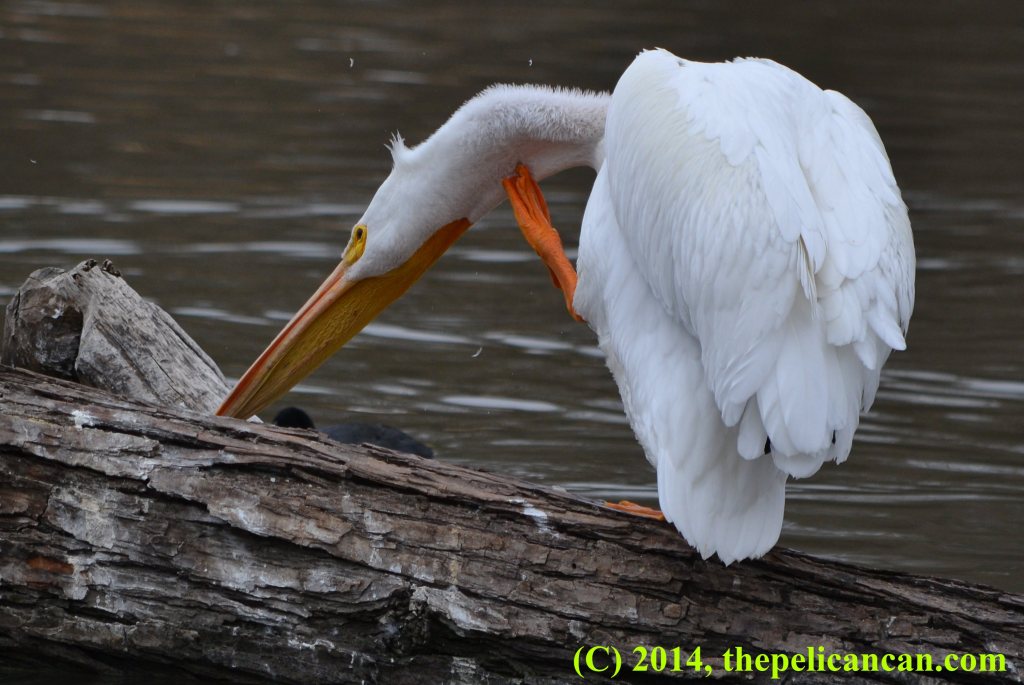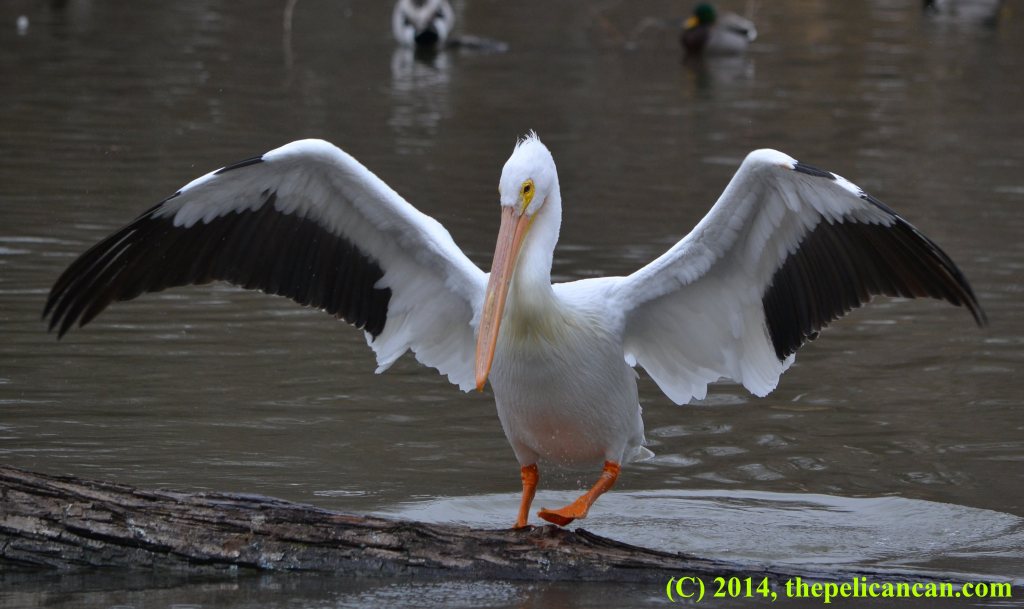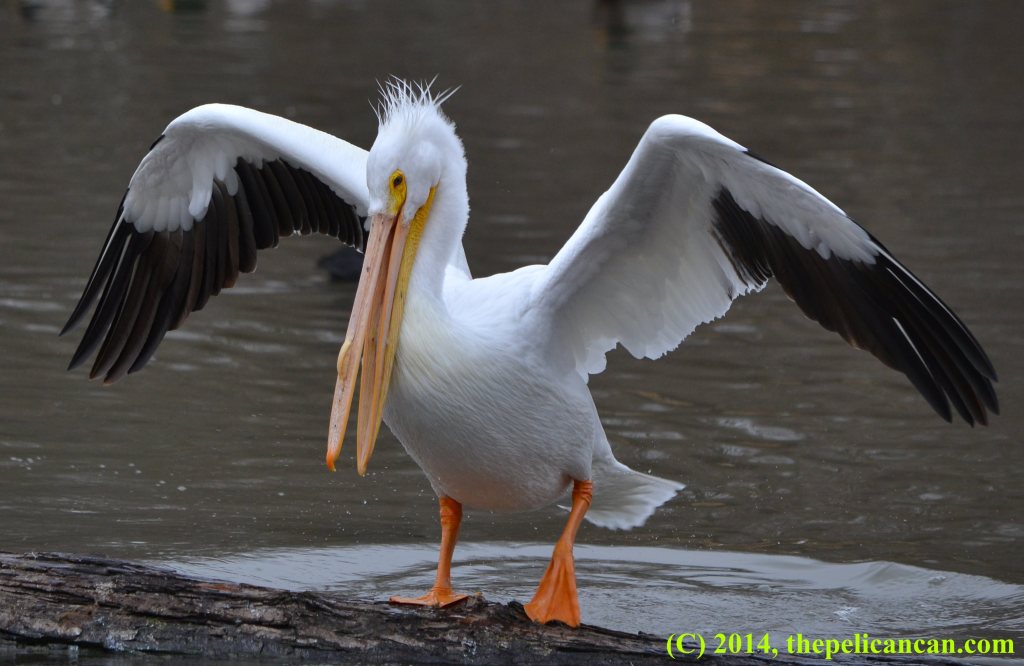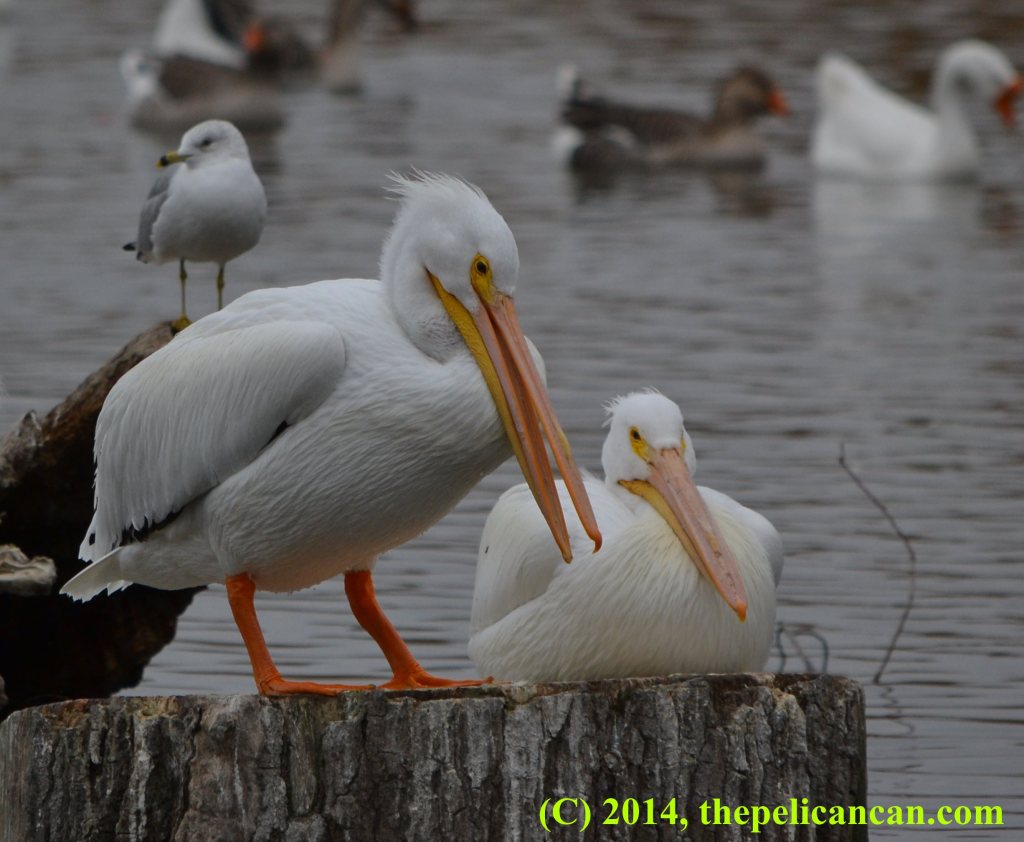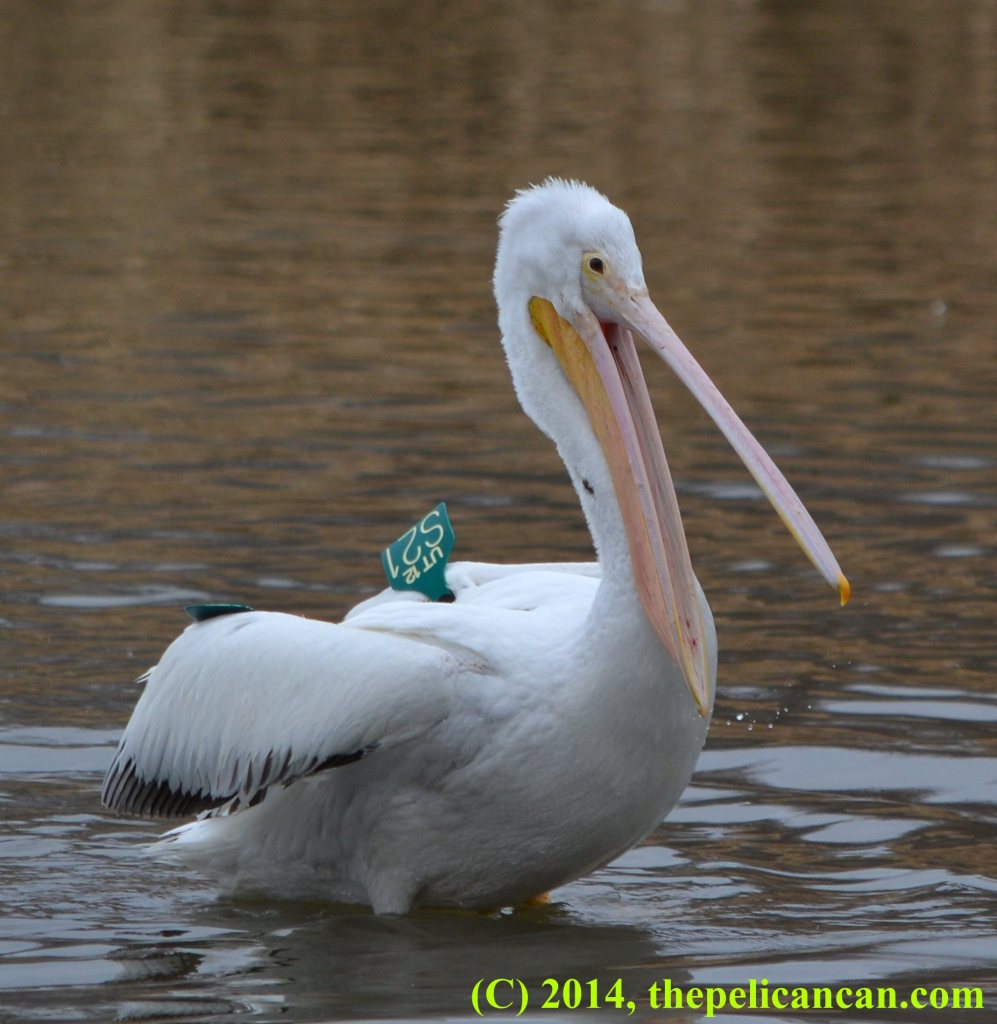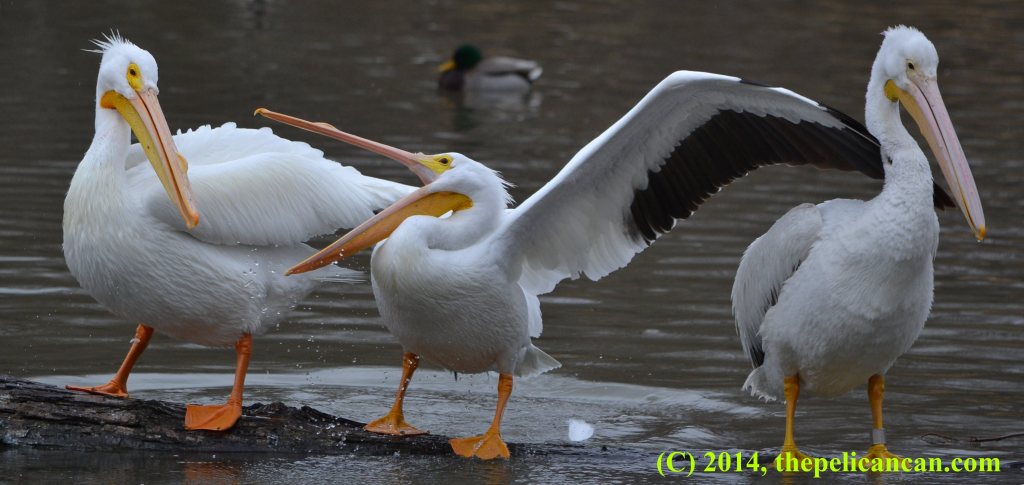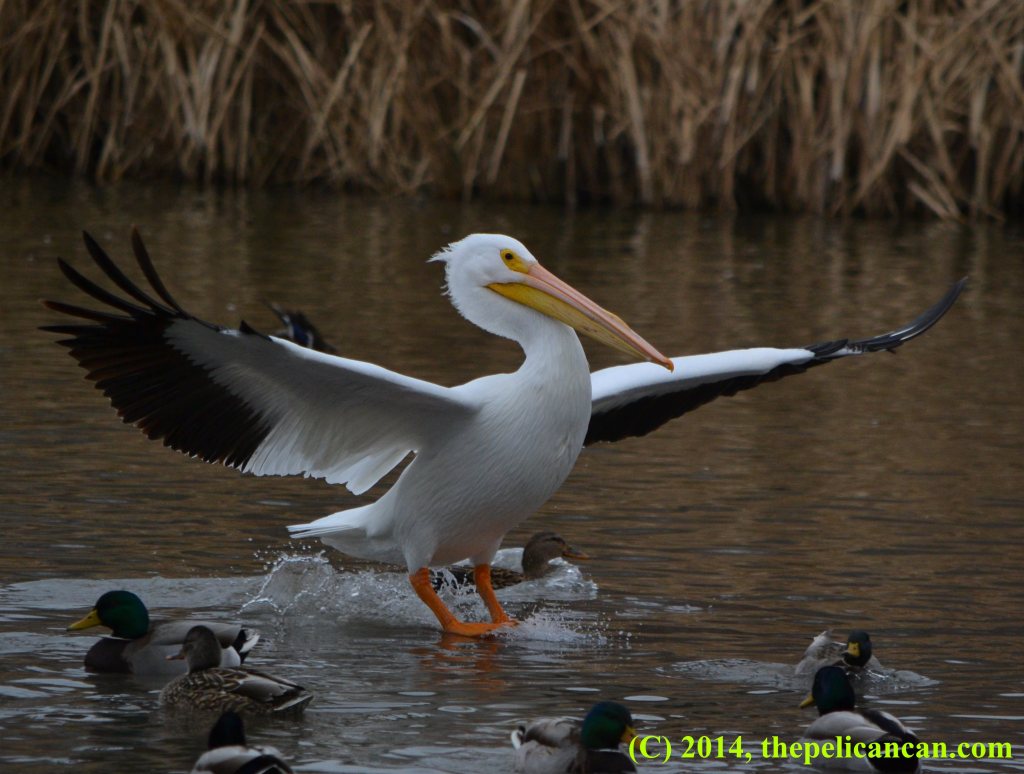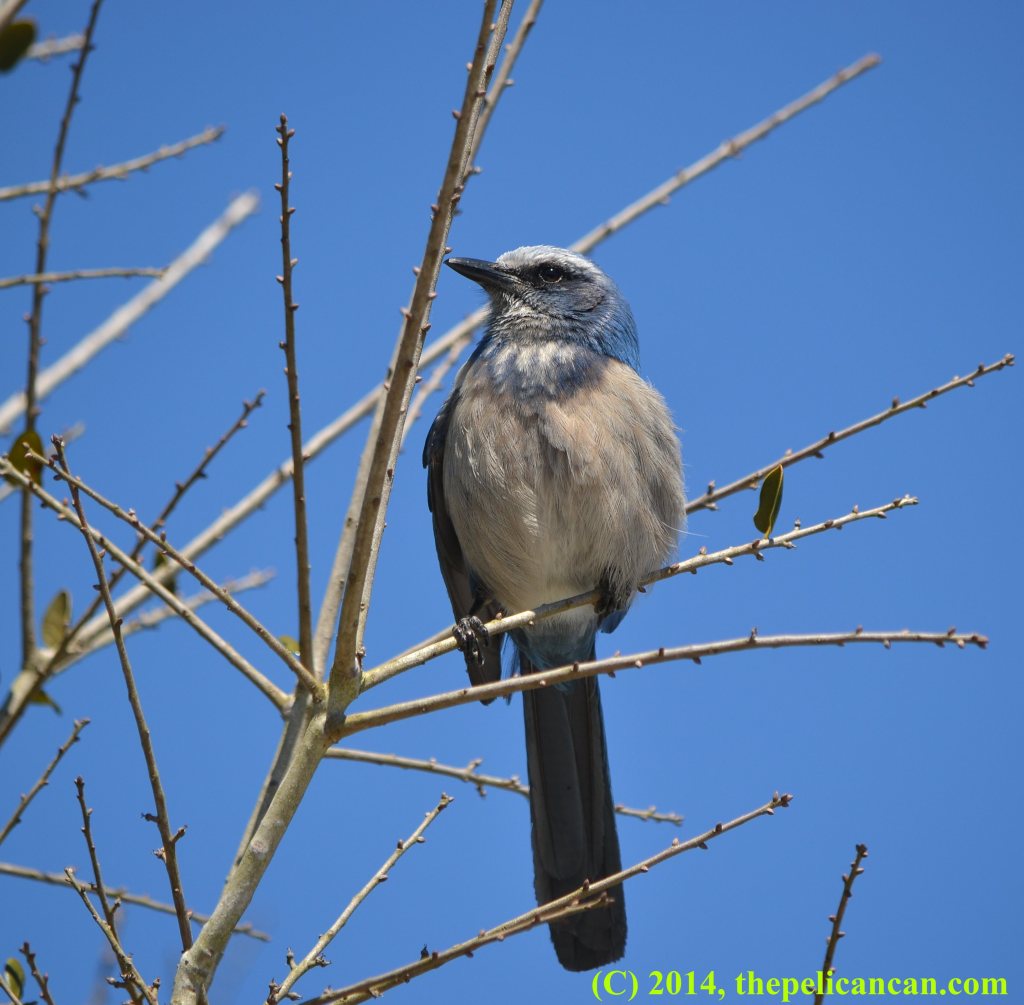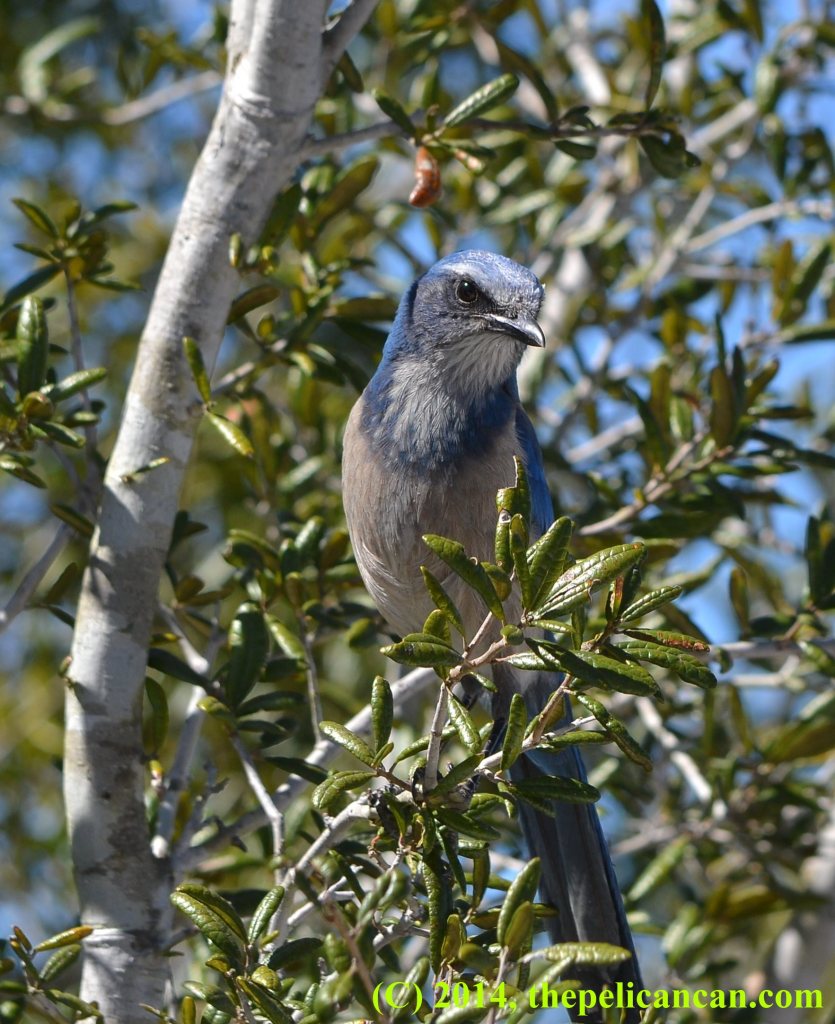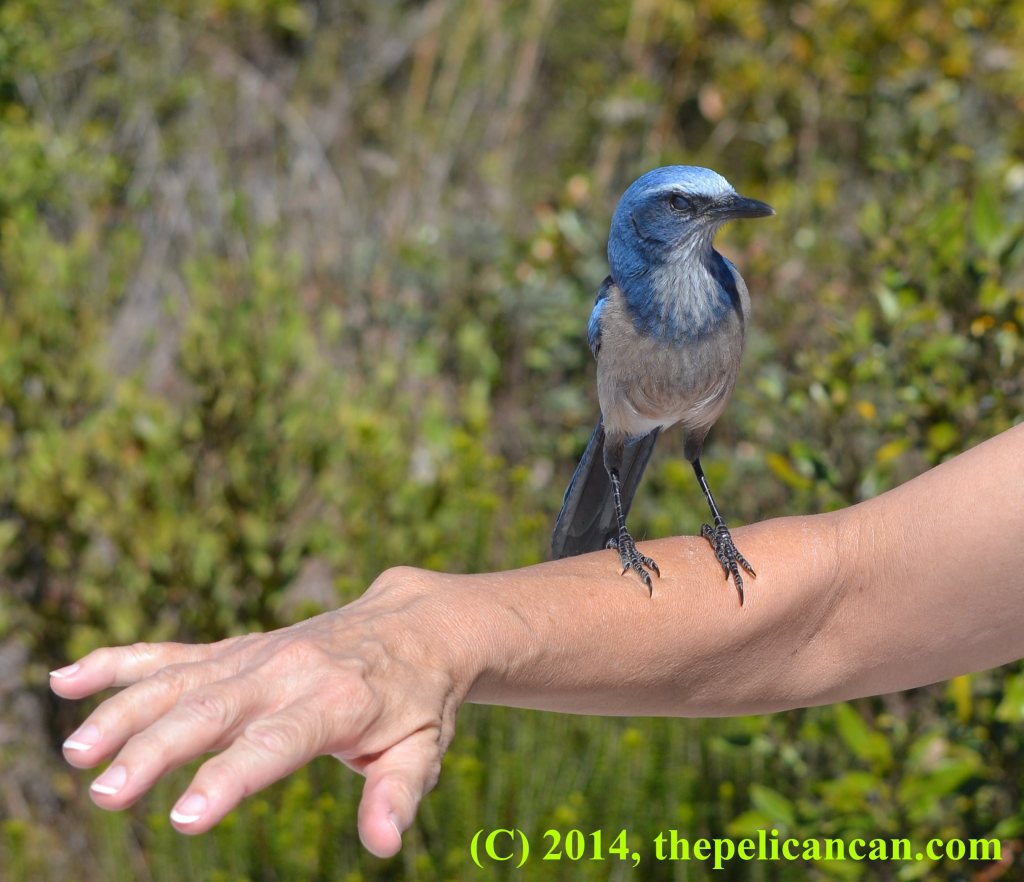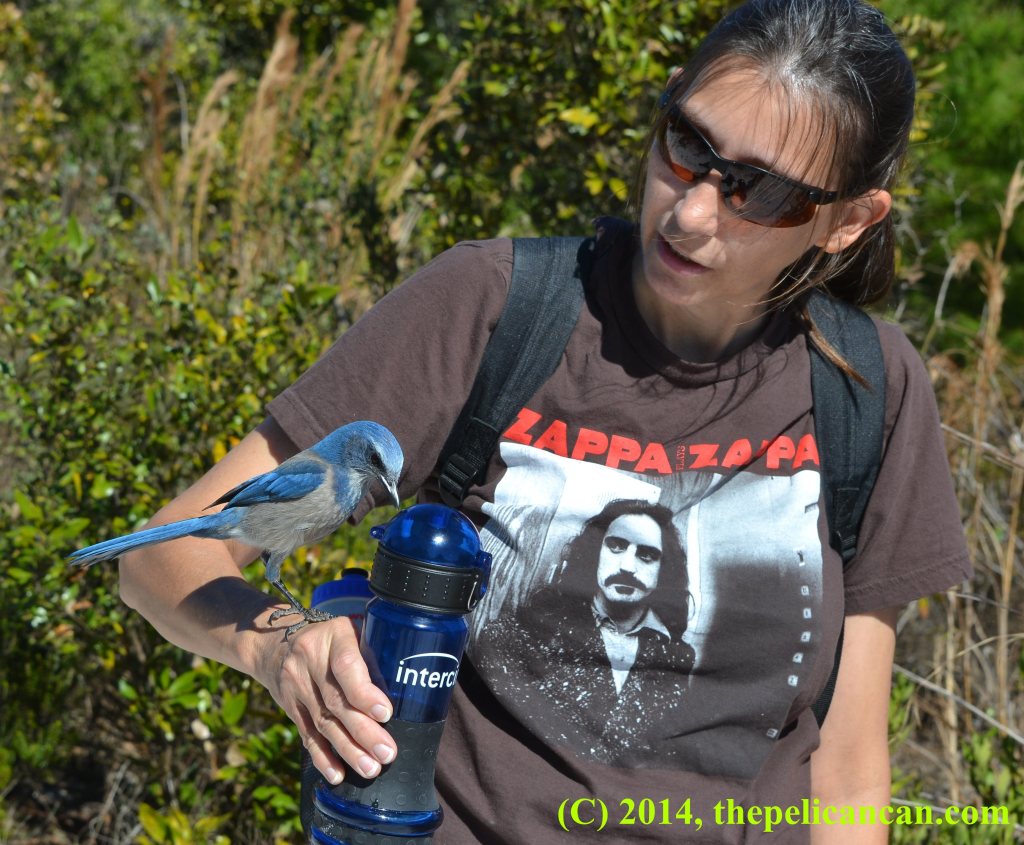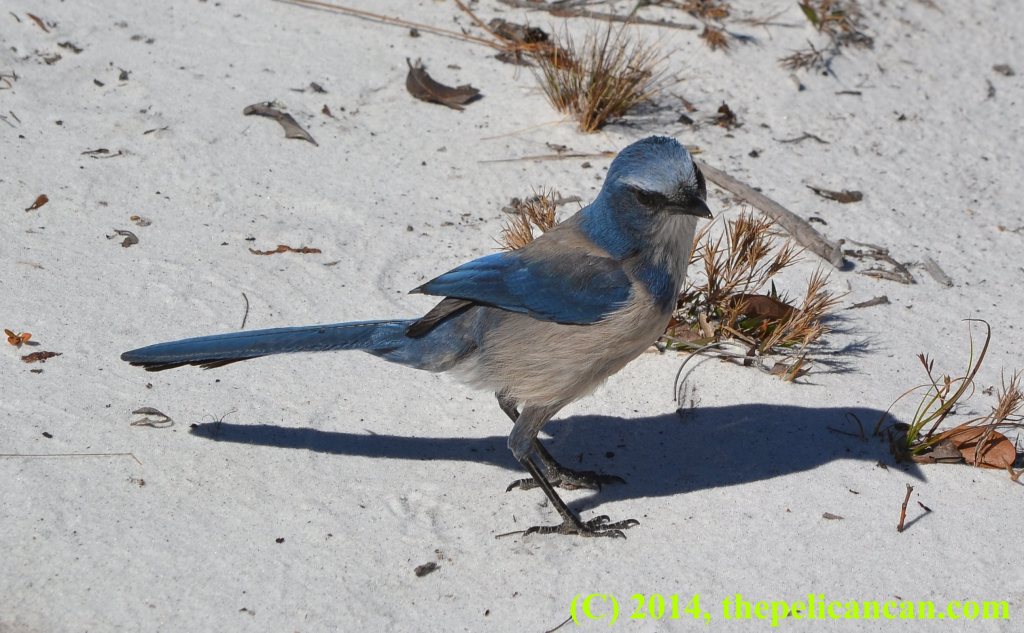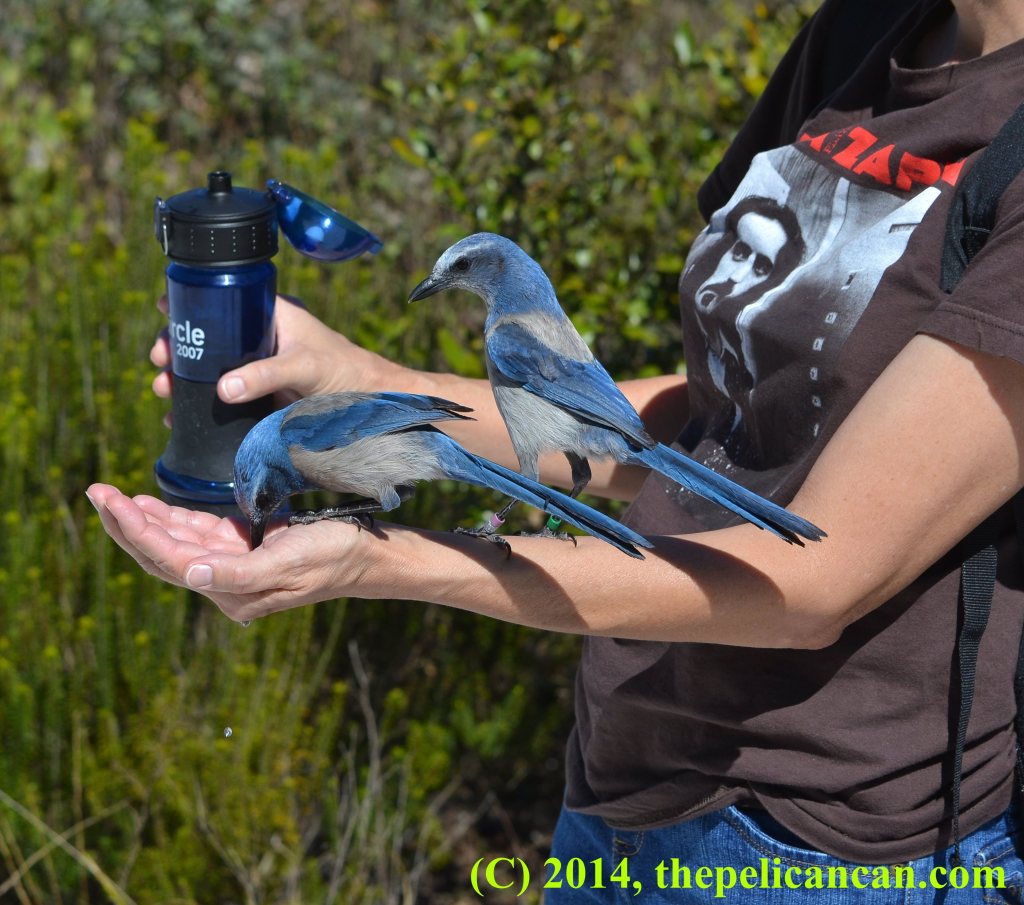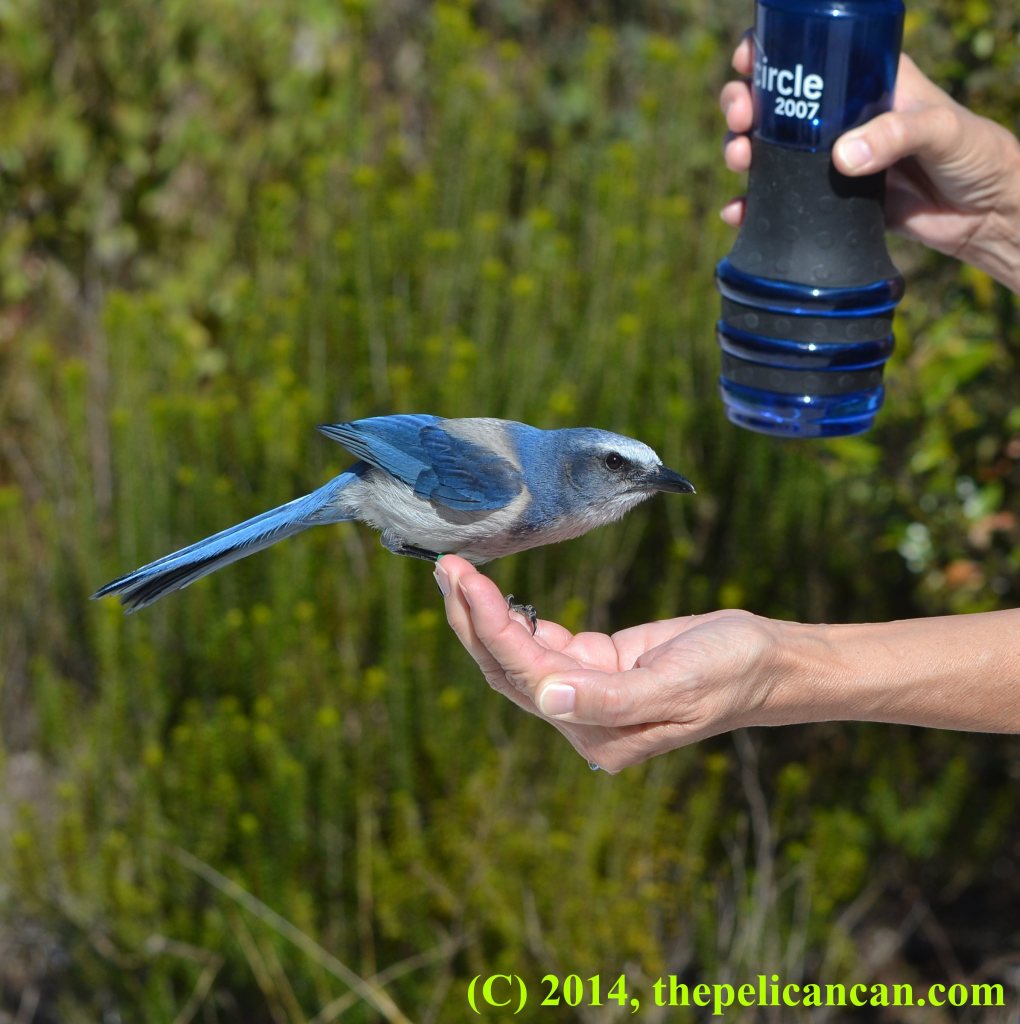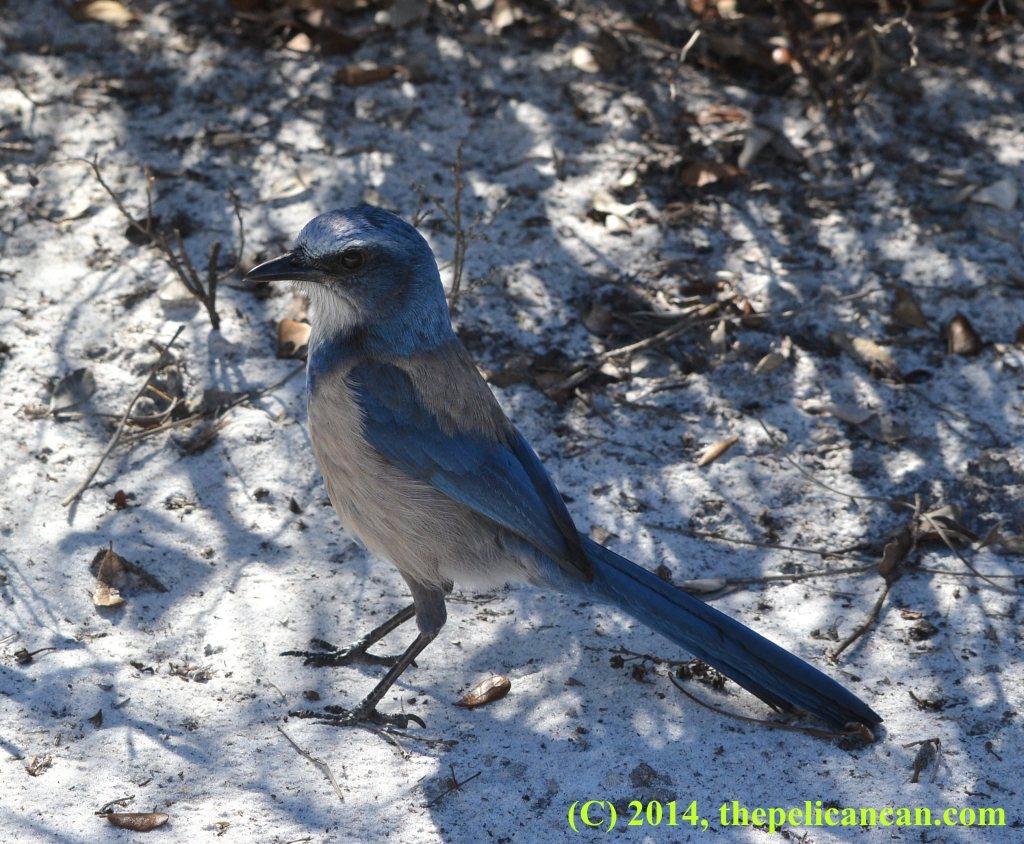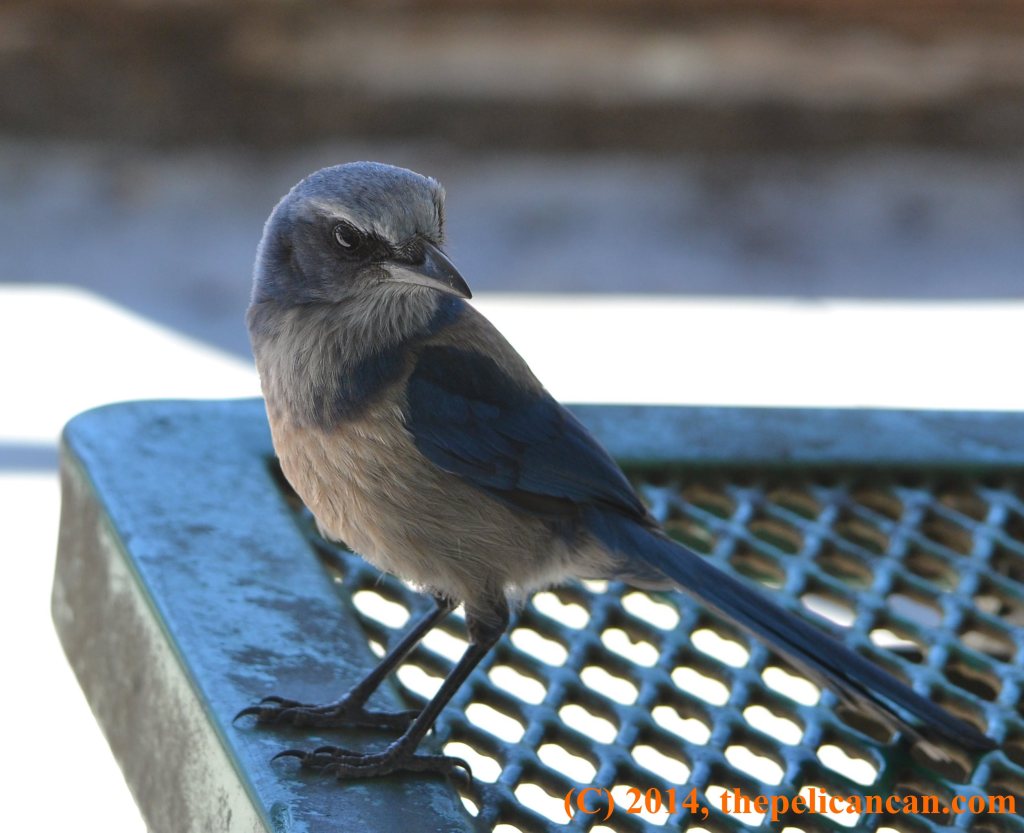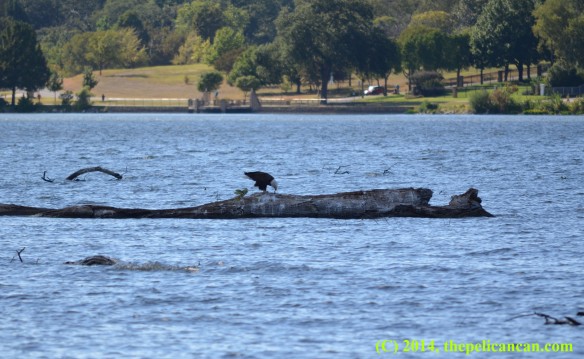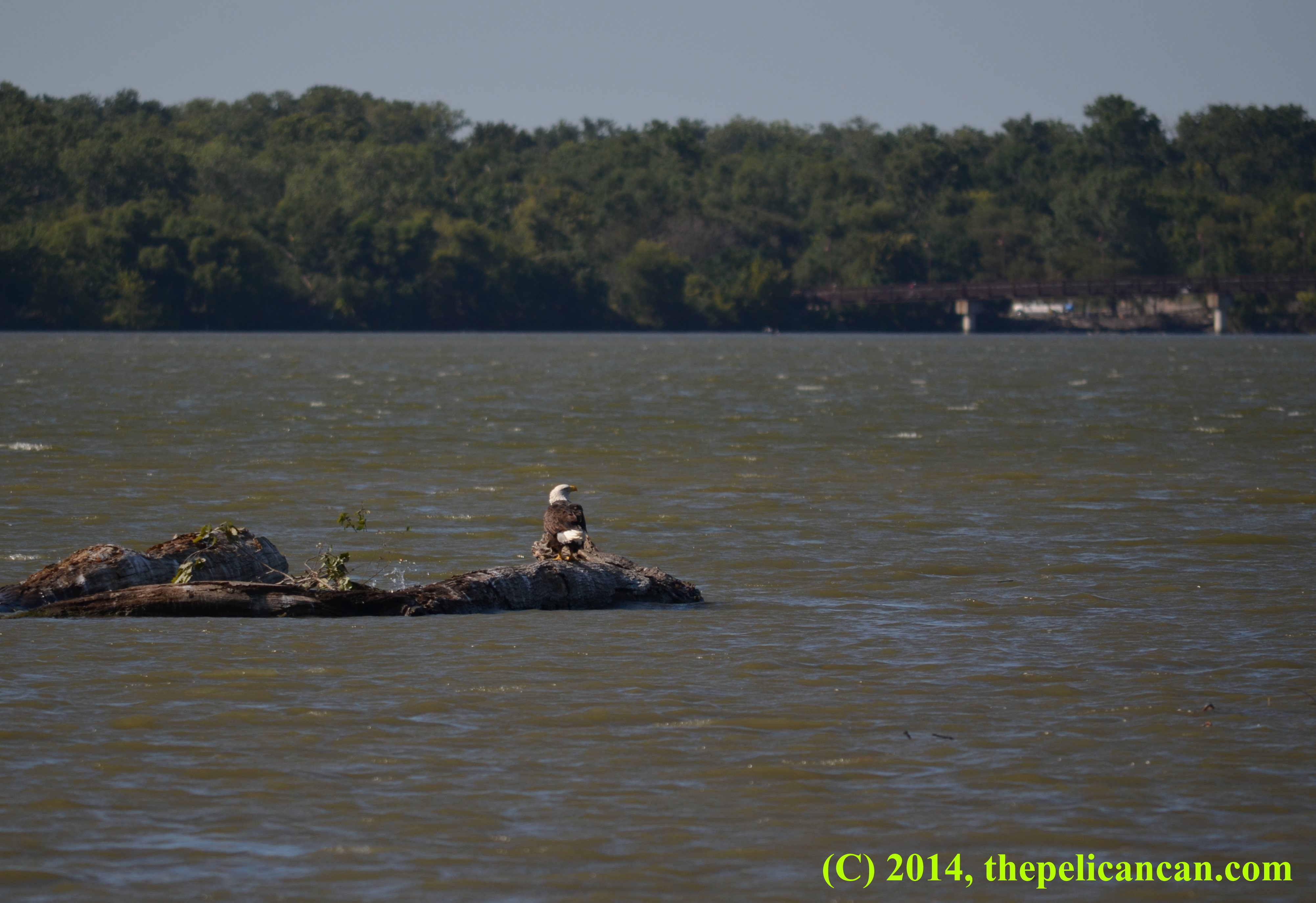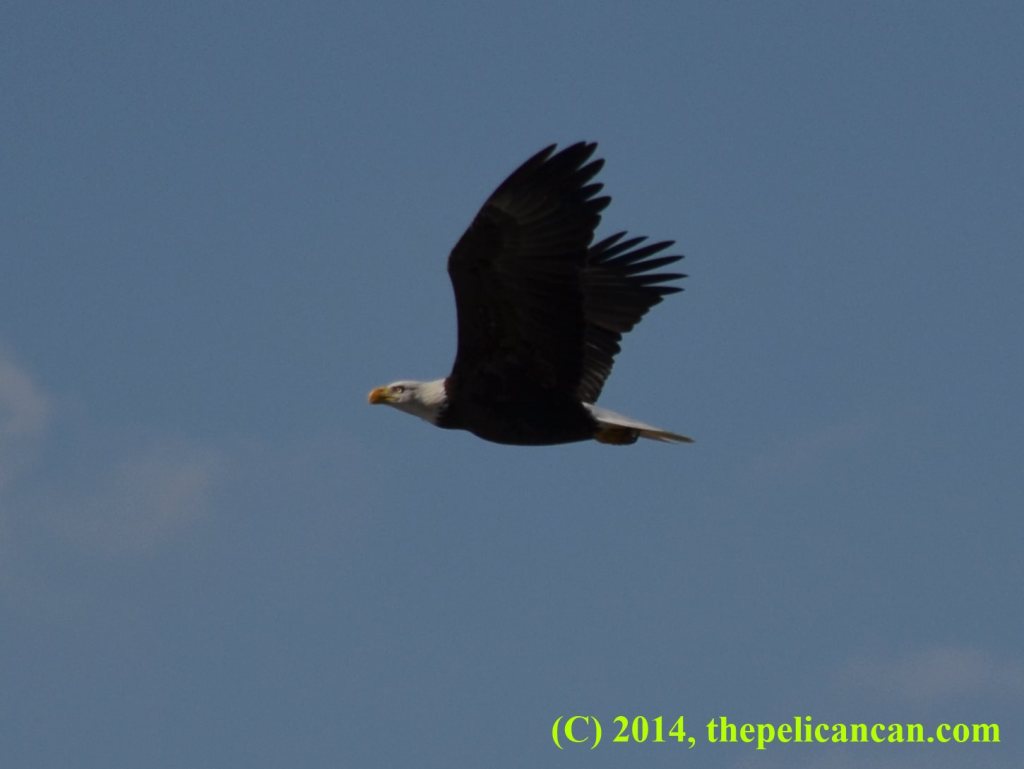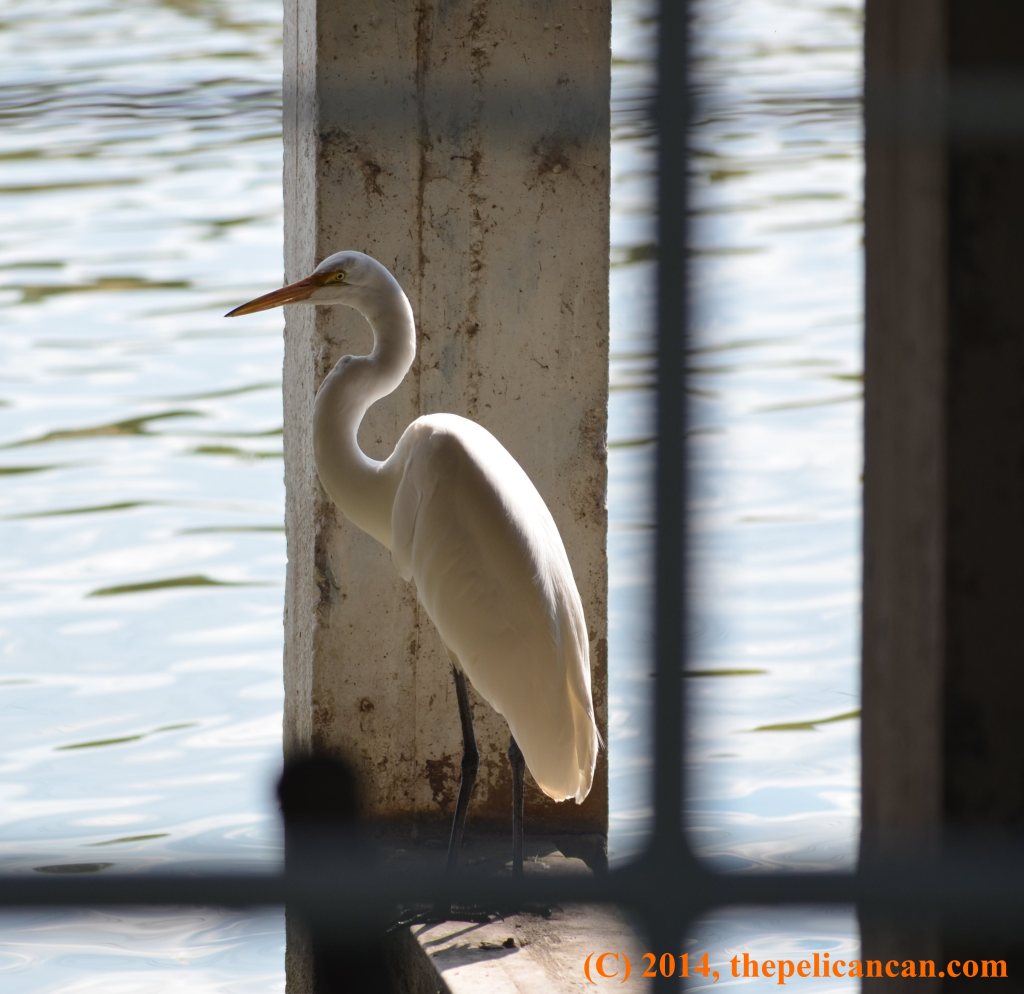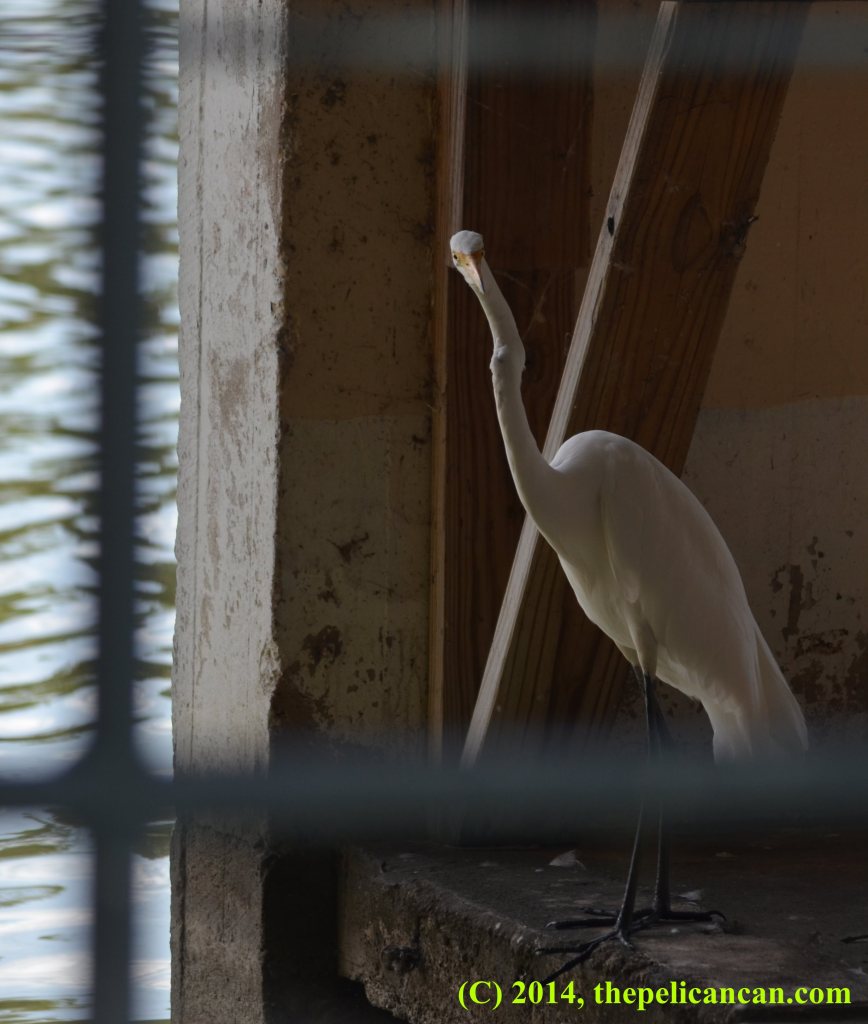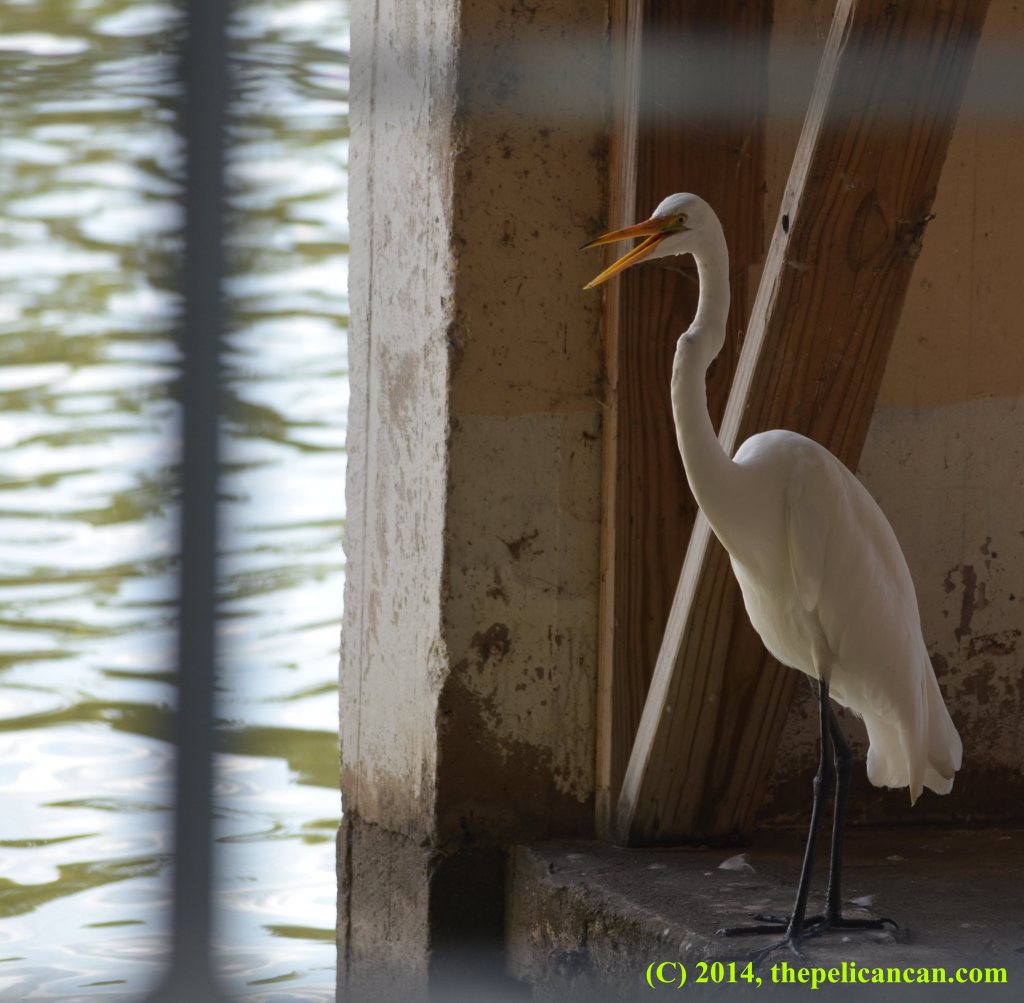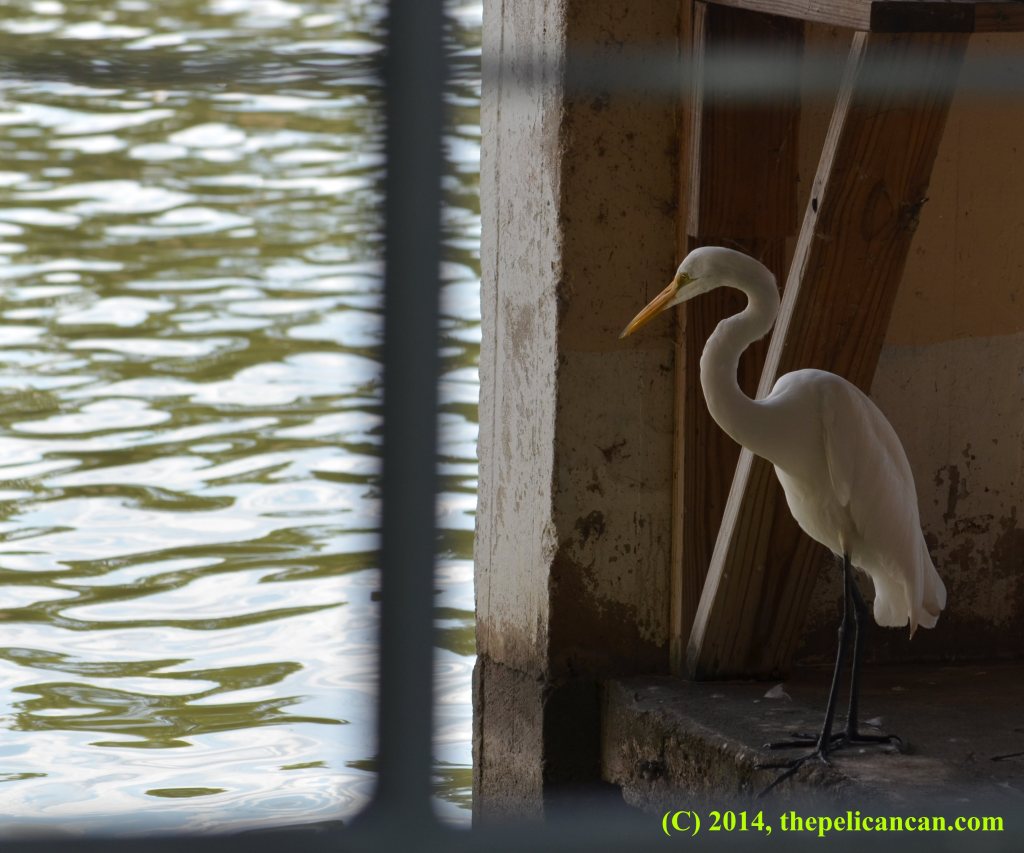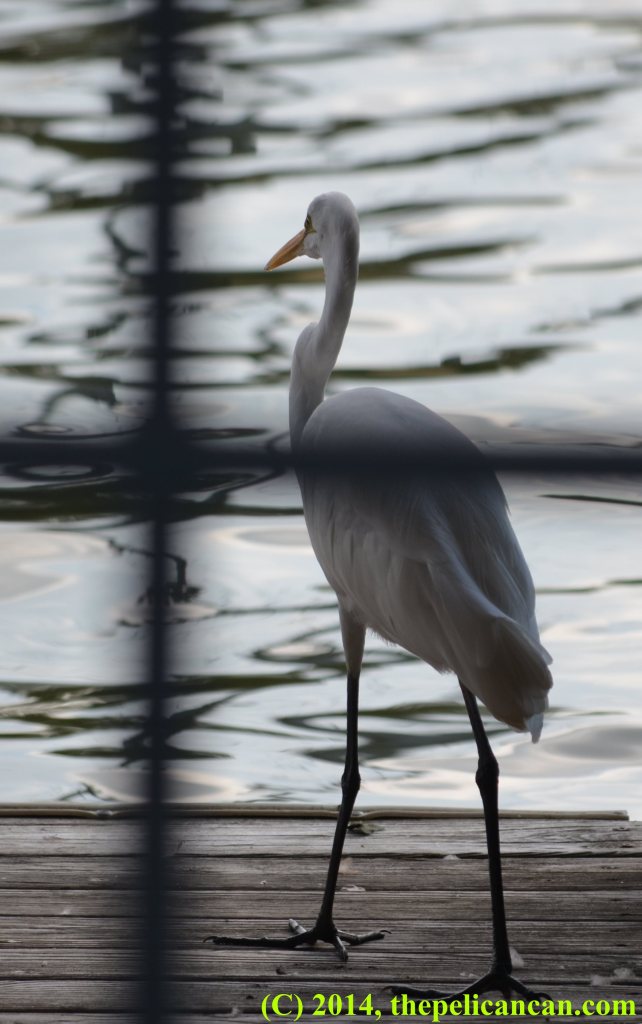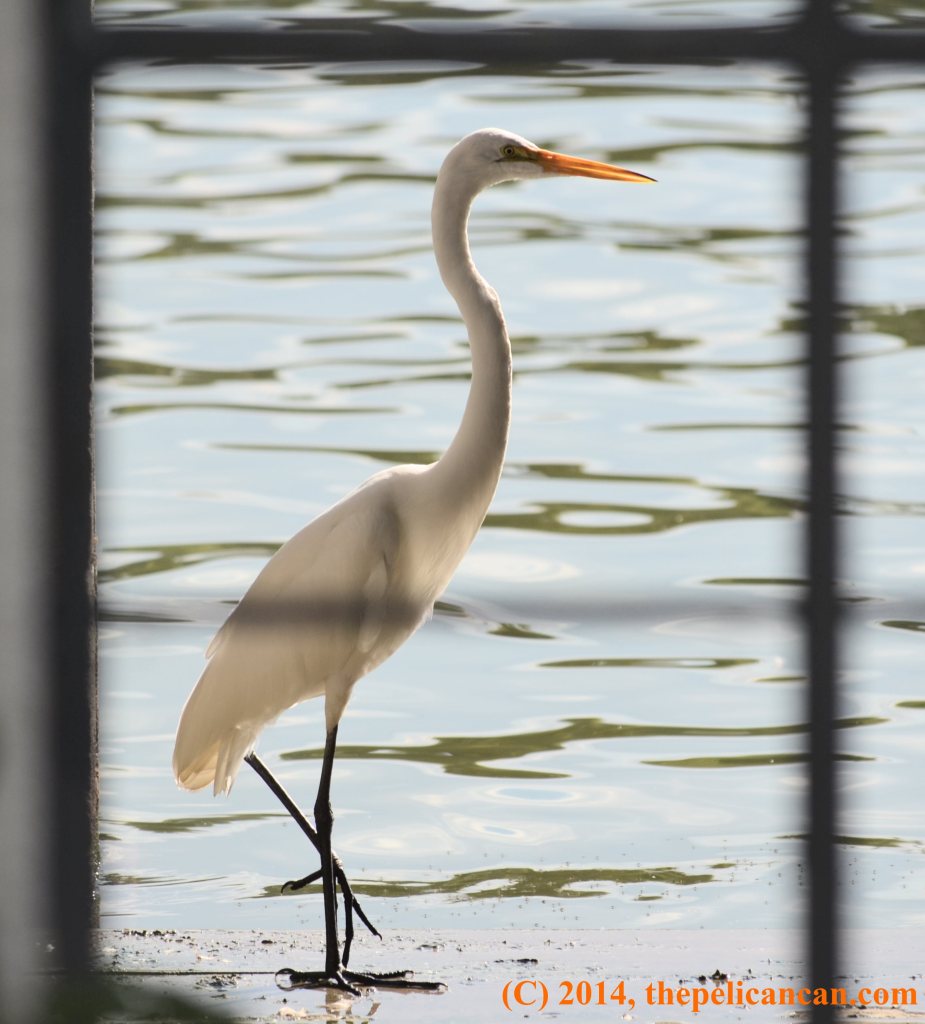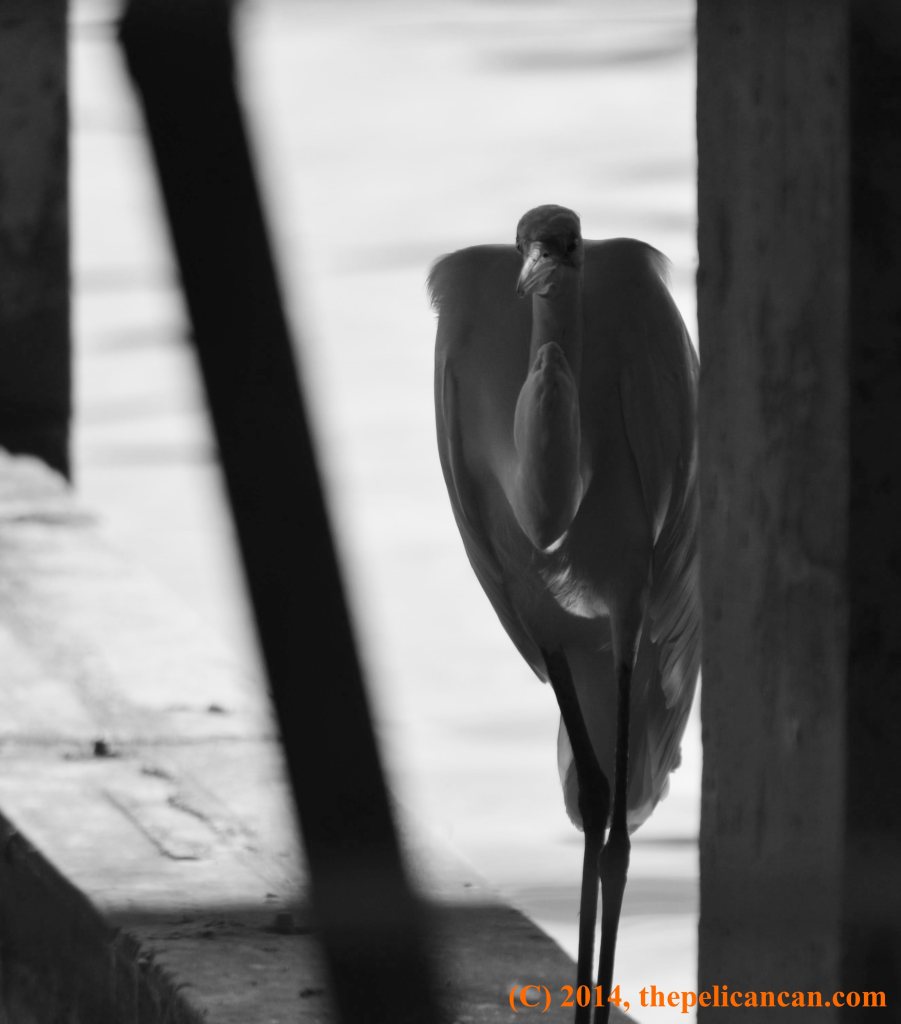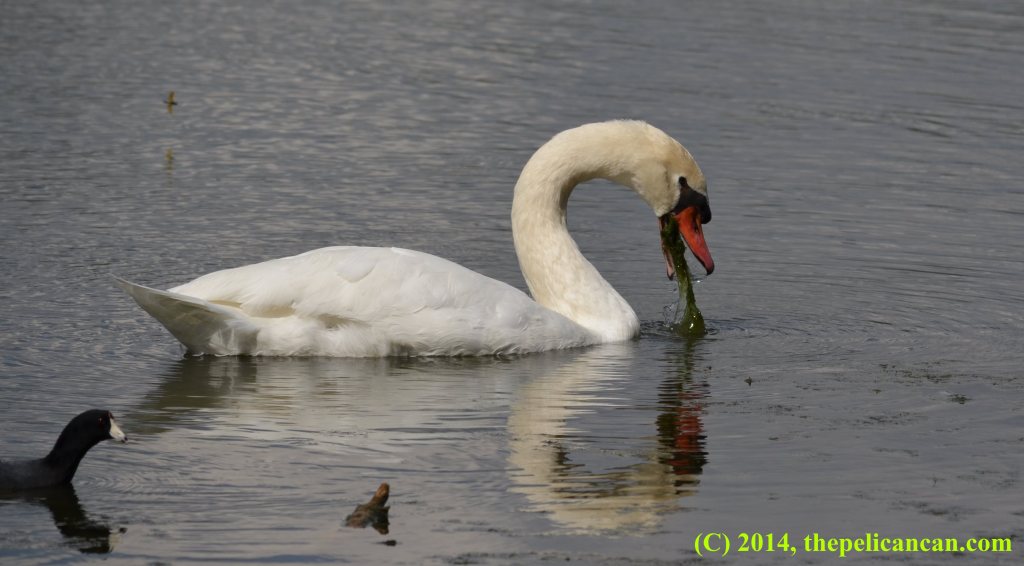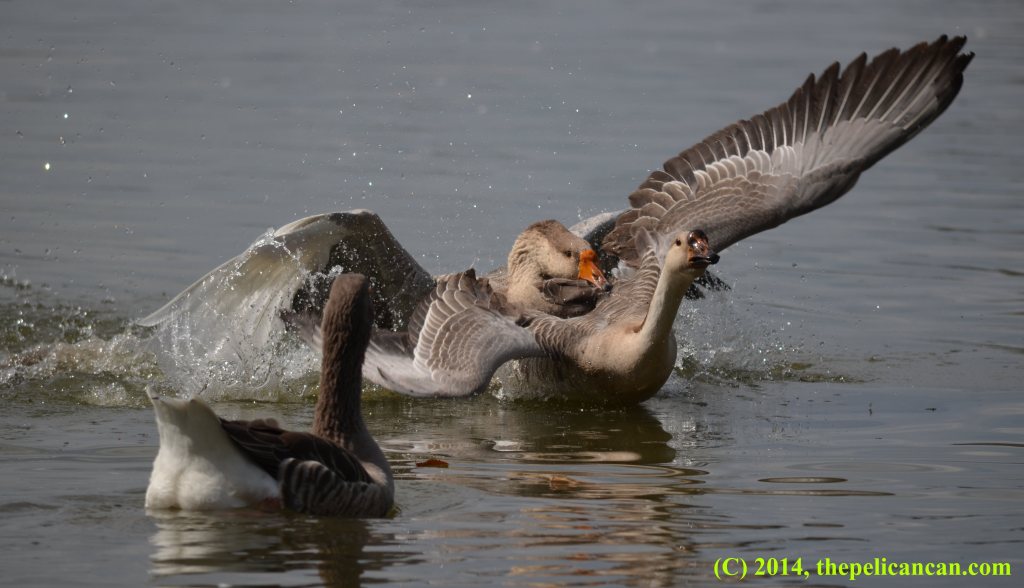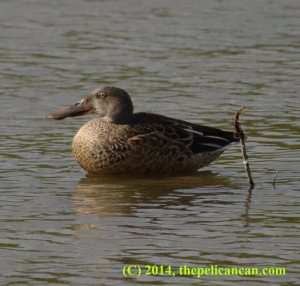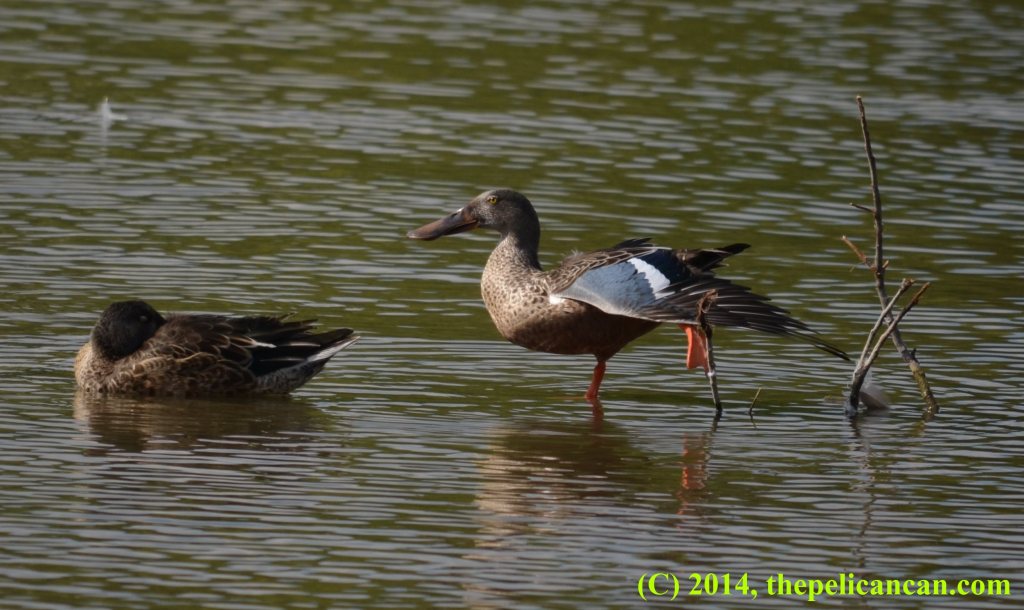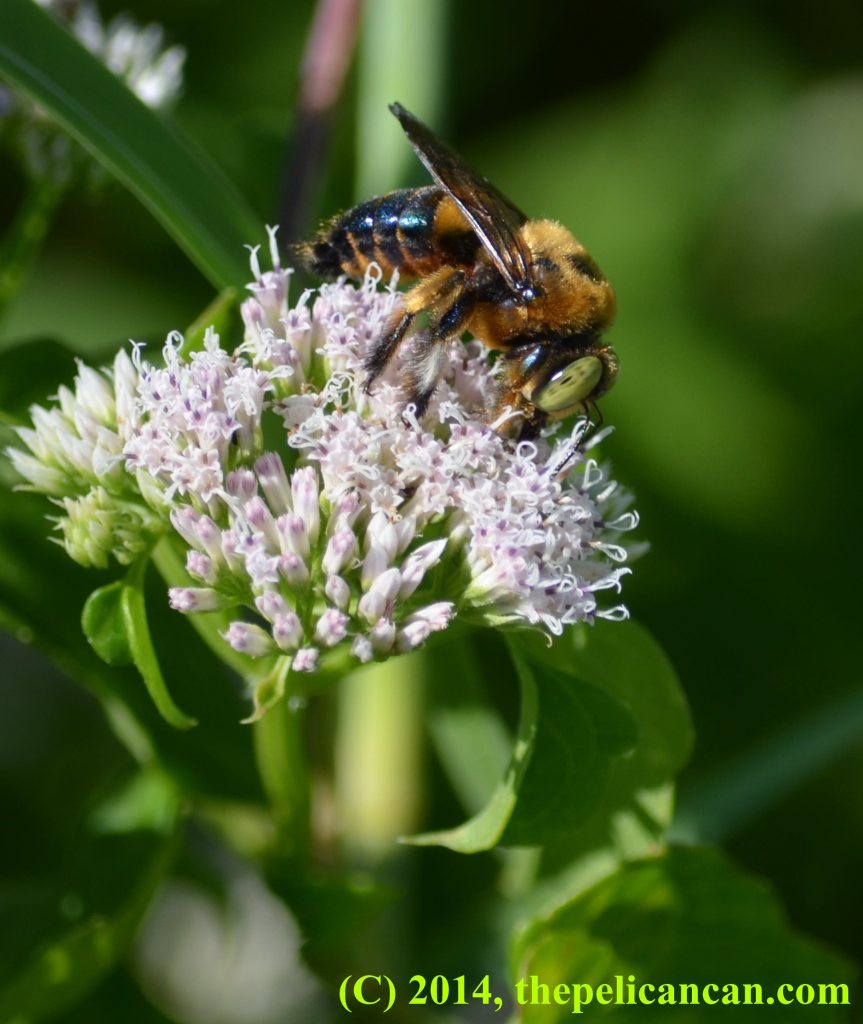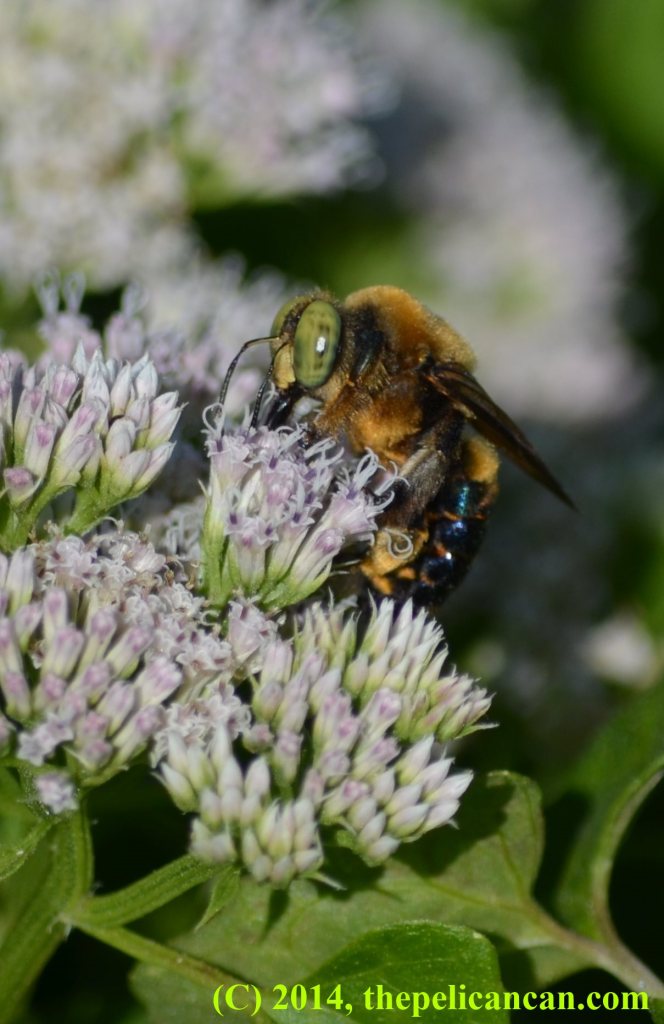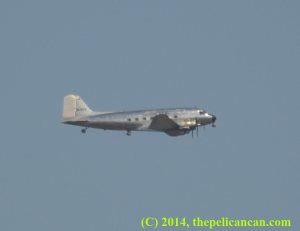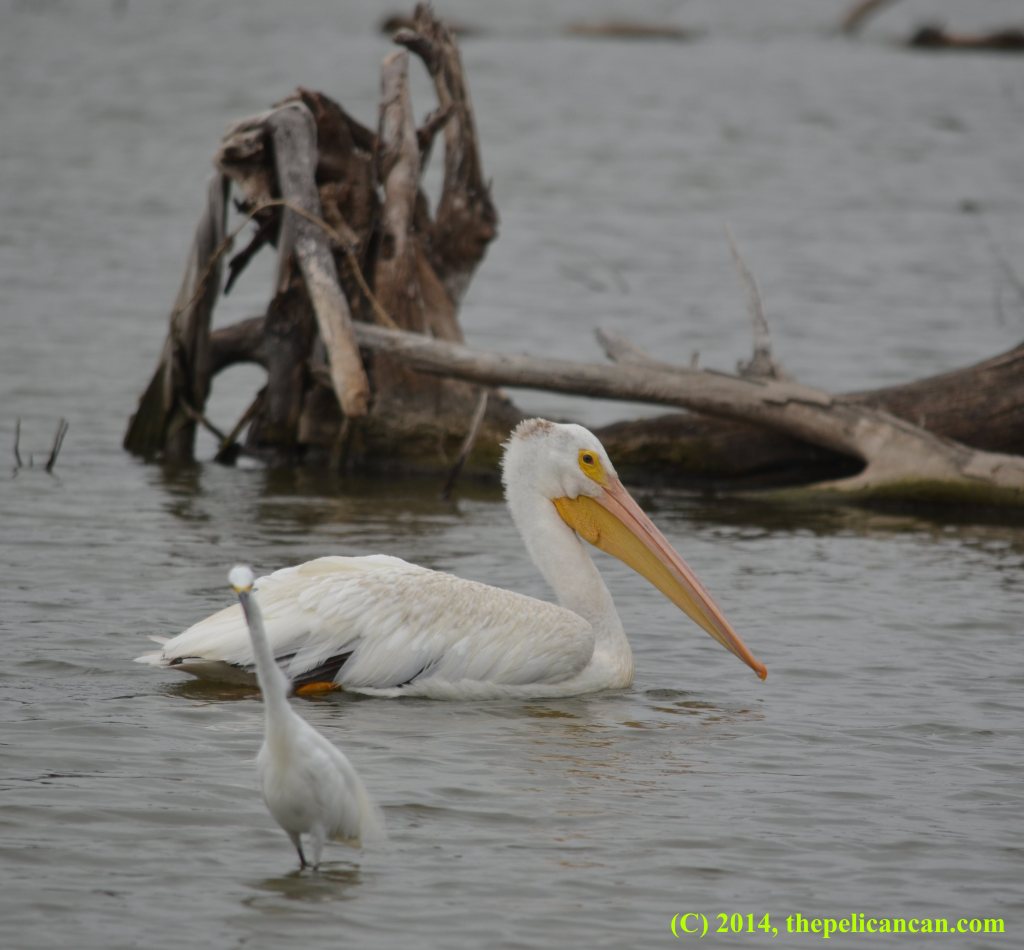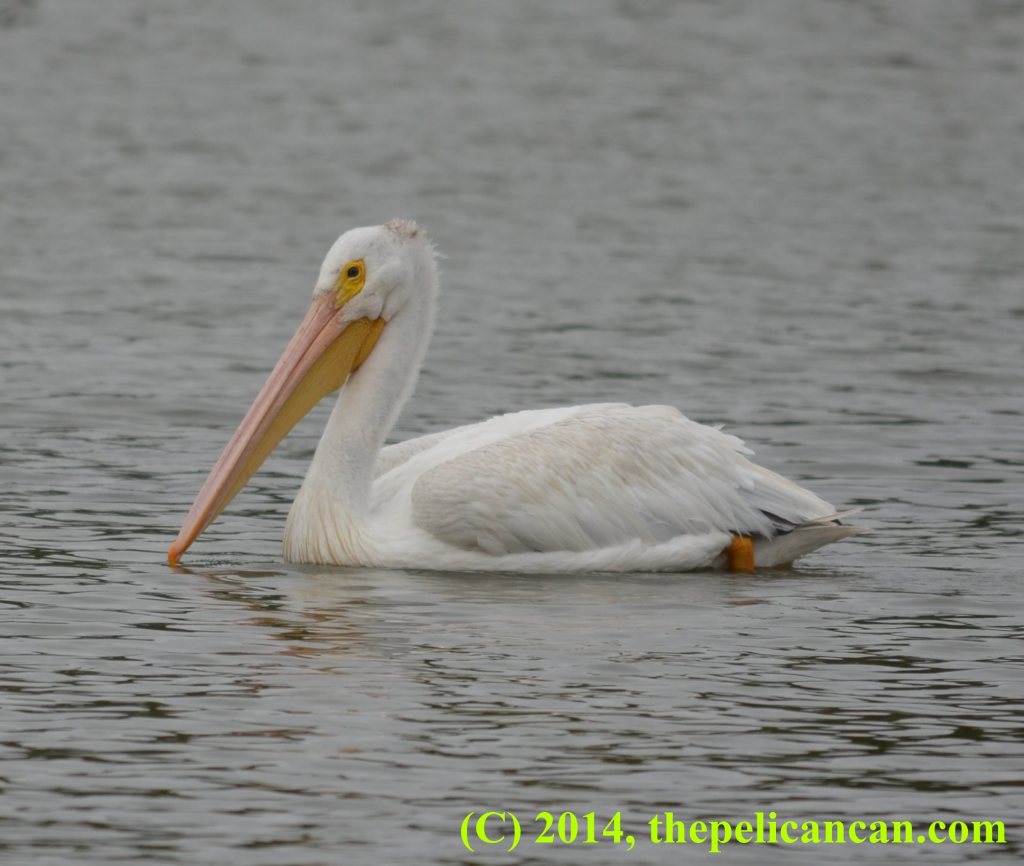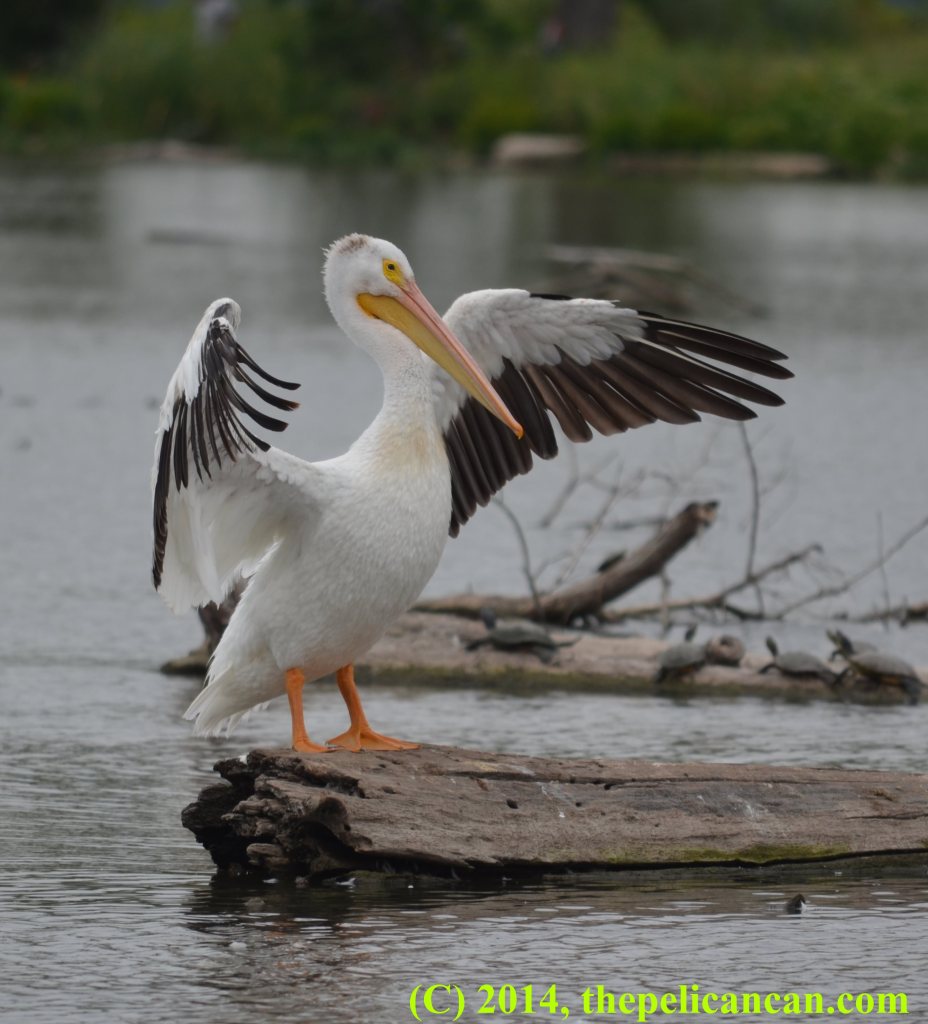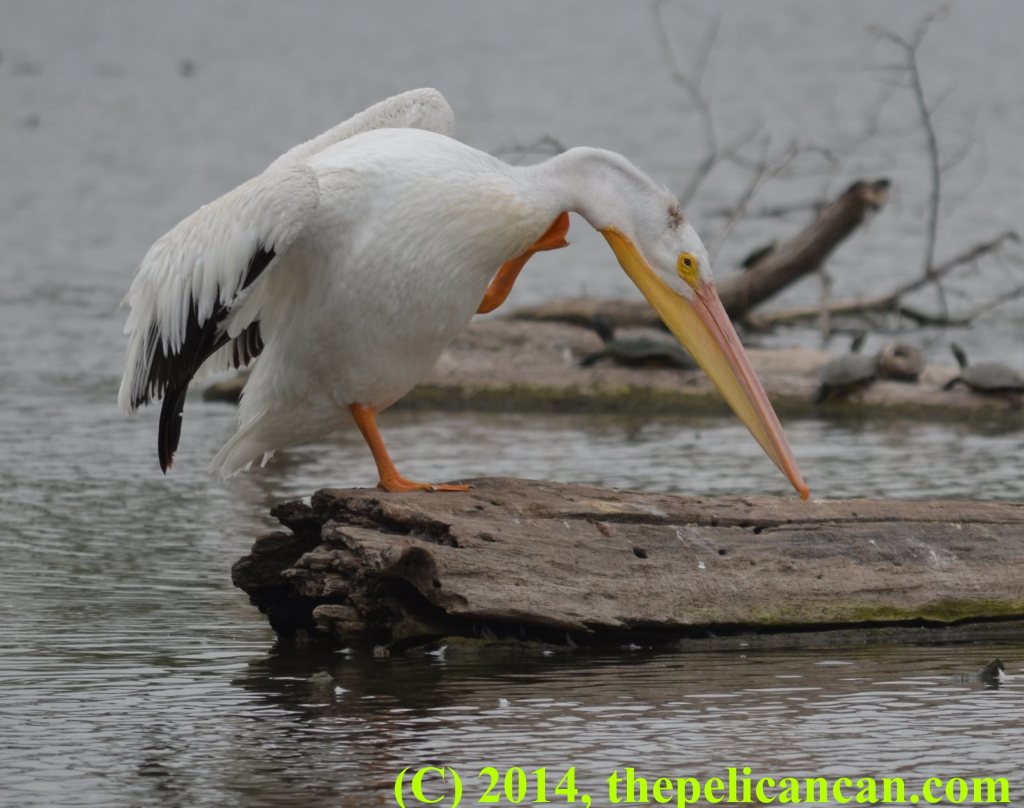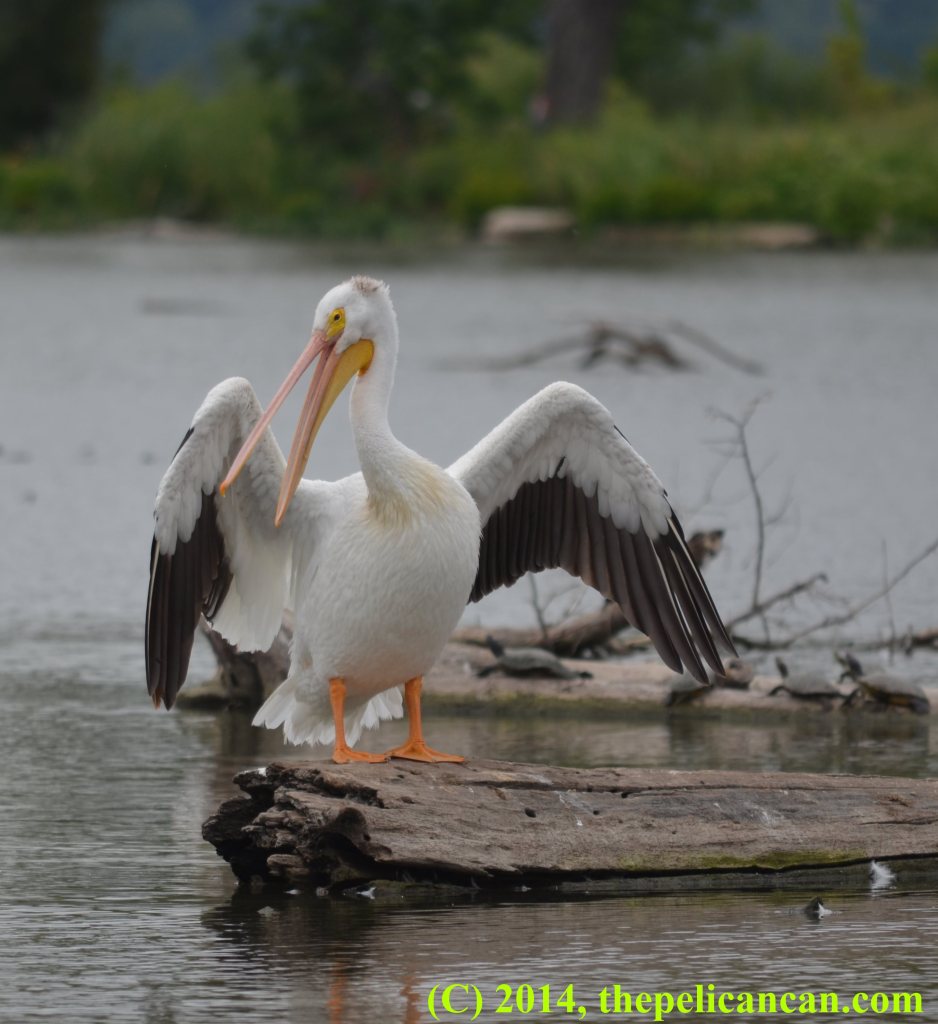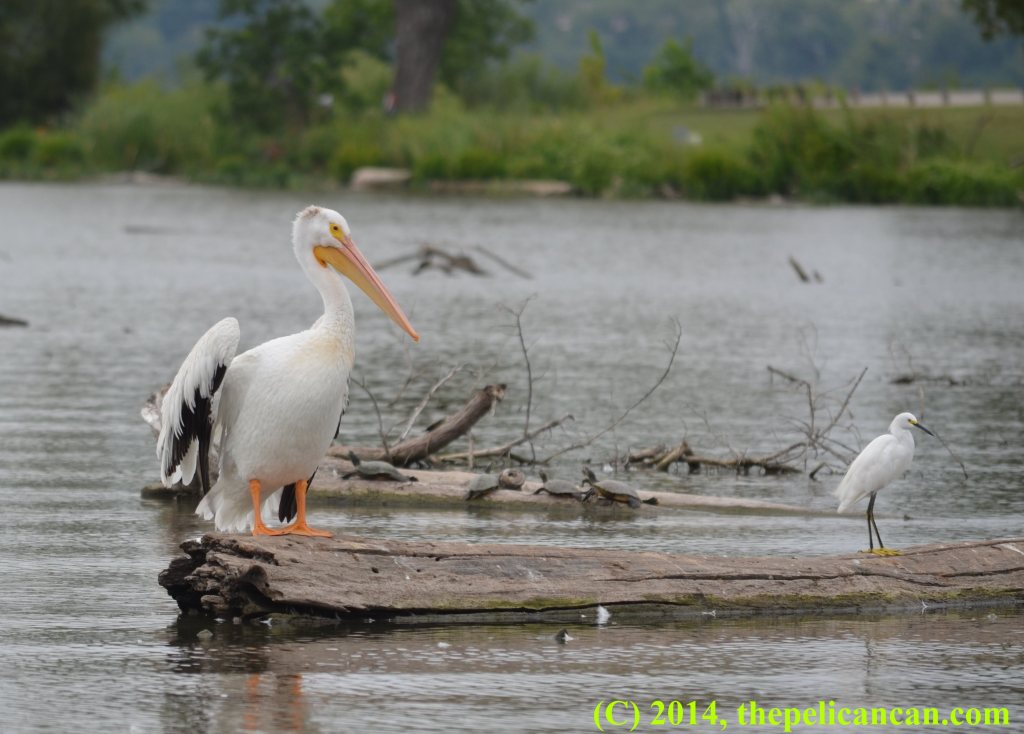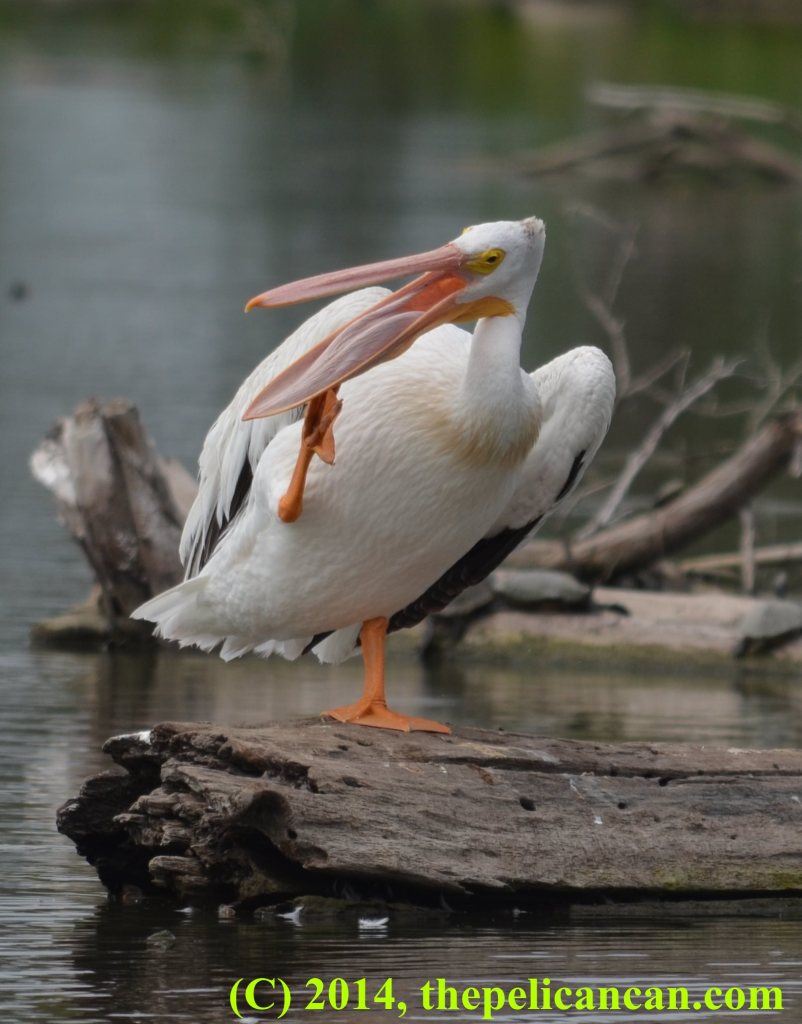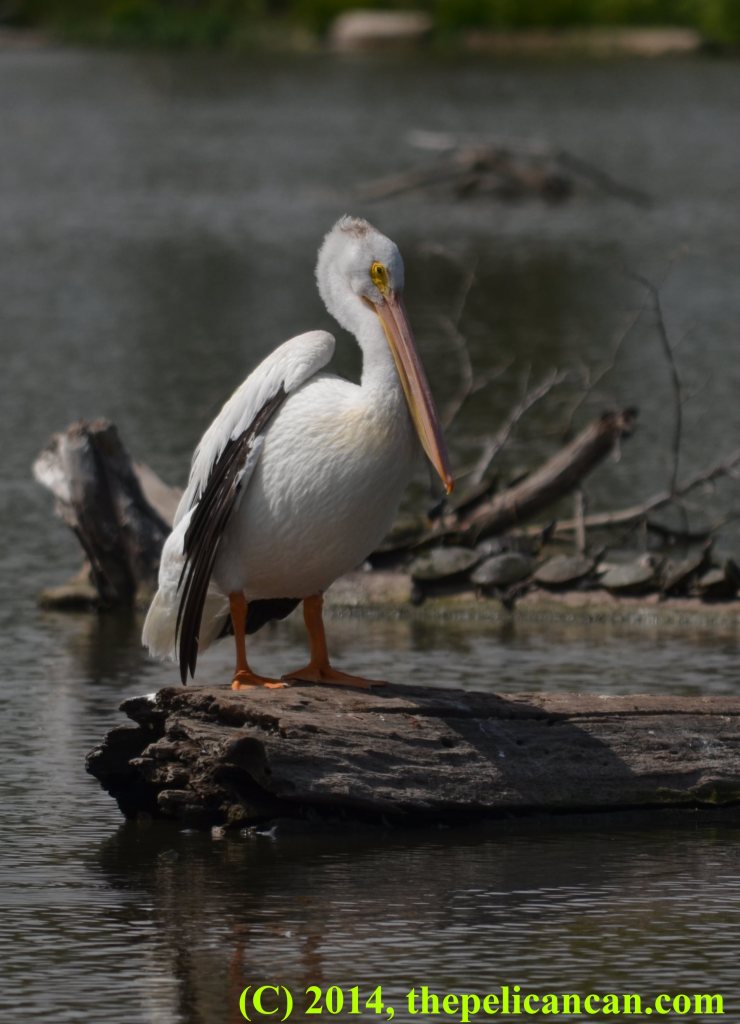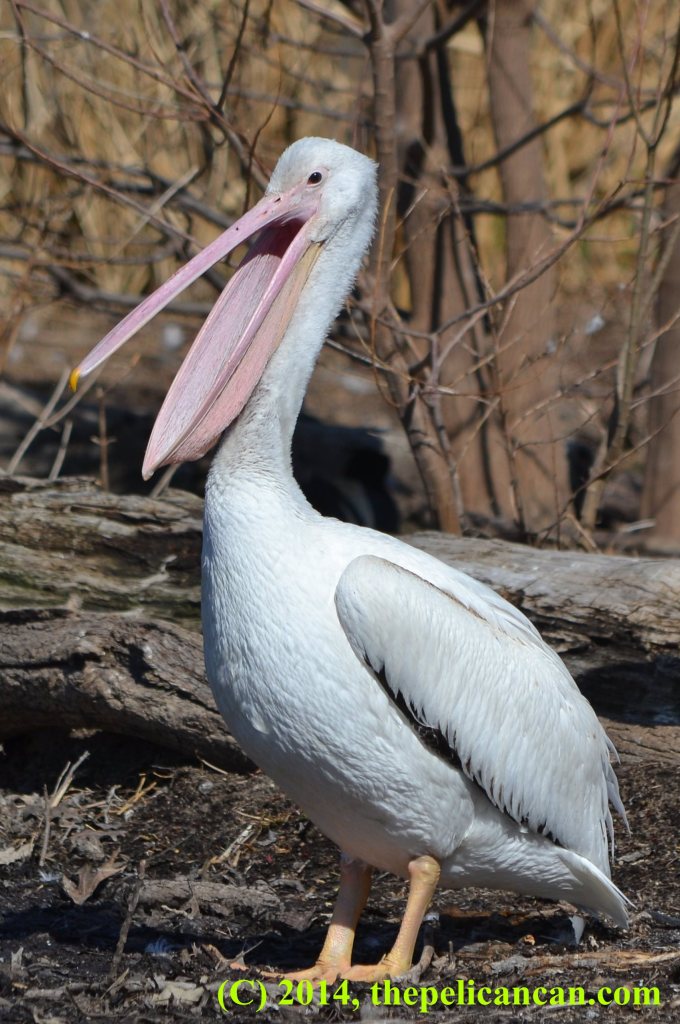When Q and I went to visit the pelicans on Sunday, February 2, we didn’t stay long because it was very cold. There was a dead fish bobbing in the water about halfway between the shore and one of the long logs that the pelicans liked to perch on. I call that log the Log of Status. Q was surprised to see the carcass still relatively unmolested: he thought that another bird would have happened upon it and eaten it. “Mother Nature is falling down on her job!” he said. Coots and gulls would occasionally swim over and peck at the fish, but they didn’t seem particularly interested in it.
On Monday the fish was still there. The weather was still very cold, and the light was dim. A few pelicans landed in the bay and swam around for a little while, but the majority of the pelicans were huddled together on logs.
Just as Q and I had seen the day before, a gull and a coot were taking turns half-heartedly pecking at the dead fish.
Suddenly a pelican was flying past the Log of Status and toward the shore. She threw one wing in the air vertically and one wing out horizontally, bracing herself as she skidded to a stop in the very shallow water. Pelicans might land close to shore, but only when there are other pelicans there. This pelican was landing well past the place where the other pelicans were congregating.
Once she recovered from her landing, she began to swim. This was not a leisurely swim; she was going so fast that she was pushing up a wave of water ahead of her body. As I watched, she seemed to keep getting larger and larger. She was swimming straight toward me, toward the shore!
It wasn’t until she leaned down and opened her bill that I realized that she was going for the fish.
She wasn’t exactly trying to scoop up the fish but was instead trying to position herself so that the moving water would float the fish into her pouch. I had to remind myself to keep taking pics and to not just watch. I was very excited. I’d never been so close to a pelican eating a fish.
Suddenly another pelican was steaming toward the first pelican, probably hoping for an opportunity to steal away the fish. The first pelican quickly stuffed all of the fish into her pouch. Only about forty-five seconds had elapsed since I noticed the first bird flying toward the fish.
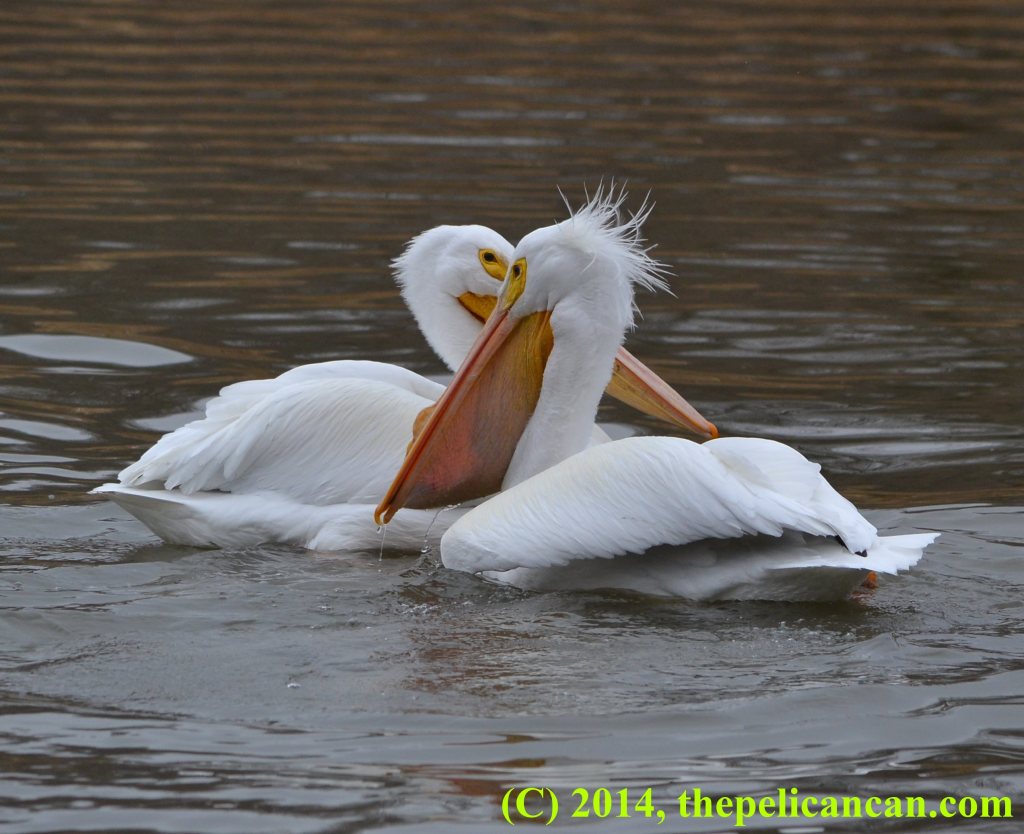
Like two ships passing in the night. Except it’s day. And they aren’t ships. And one has a fish and the other doesn’t.
The first pelican drifted far away, way past the pelicans on the Log of Status. She kept her head tilted in the same position as she floated. The second pelican followed her briefly before getting bored and swimming back to jump onto a log close to the shore. I call that log the Shore Log. After she got on the Shore Log, she worked her way to one side and had a good scratching session.
Another bird jumped onto the log.
She squabbled a bit with the existing pelican, but they both calmed down before any major beaking got going.
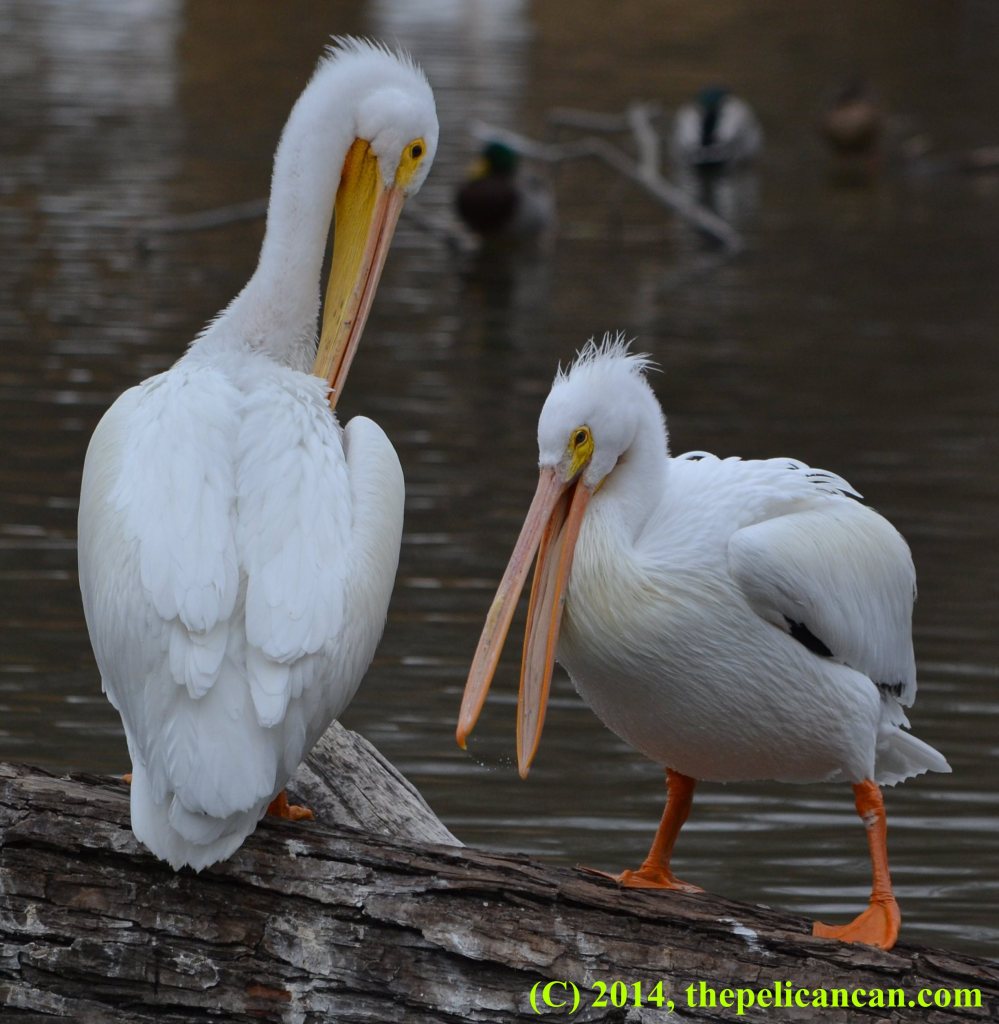
Well, I guess we’ll just have to agree to disagree, but I really believe that Jean-Luc Picard was the best captain of the Enterprise.
Another pelican joined the two birds on the log, although she did so peacefully.
Close to the Log of Status is a large stump where pelicans like to loaf. These two had fought briefly before settling down. Fighting is very common among the pelicans here, although the birds typically settle down after a few lunges.
Then a very special pelican flew into the bay.
I first saw and reported UT12S21 (S21) to the Bird Banding Laboratory on December 11, 2013. She stayed at White Rock Lake until the very end of the season, leaving in the first week of April. She was a first-year pelican originally from the Great Salt Lake, which is pretty incredible—research indicates that North American white pelicans are divided by the Rocky Mountains into two main populations, and migrating pelicans don’t typically cross the mountains. Of course, doing uncommon and courageous things was just part of S21’s style. She had a distinct personality, and I always enjoyed watching her interactions with other pelicans. I was a little disappointed when she joined the others on the Shore Log with no drama.
Then excitement occurred when the next pelican took her turn.
The new pelican’s aggression was a bluff; she settled in quite nicely with the others.
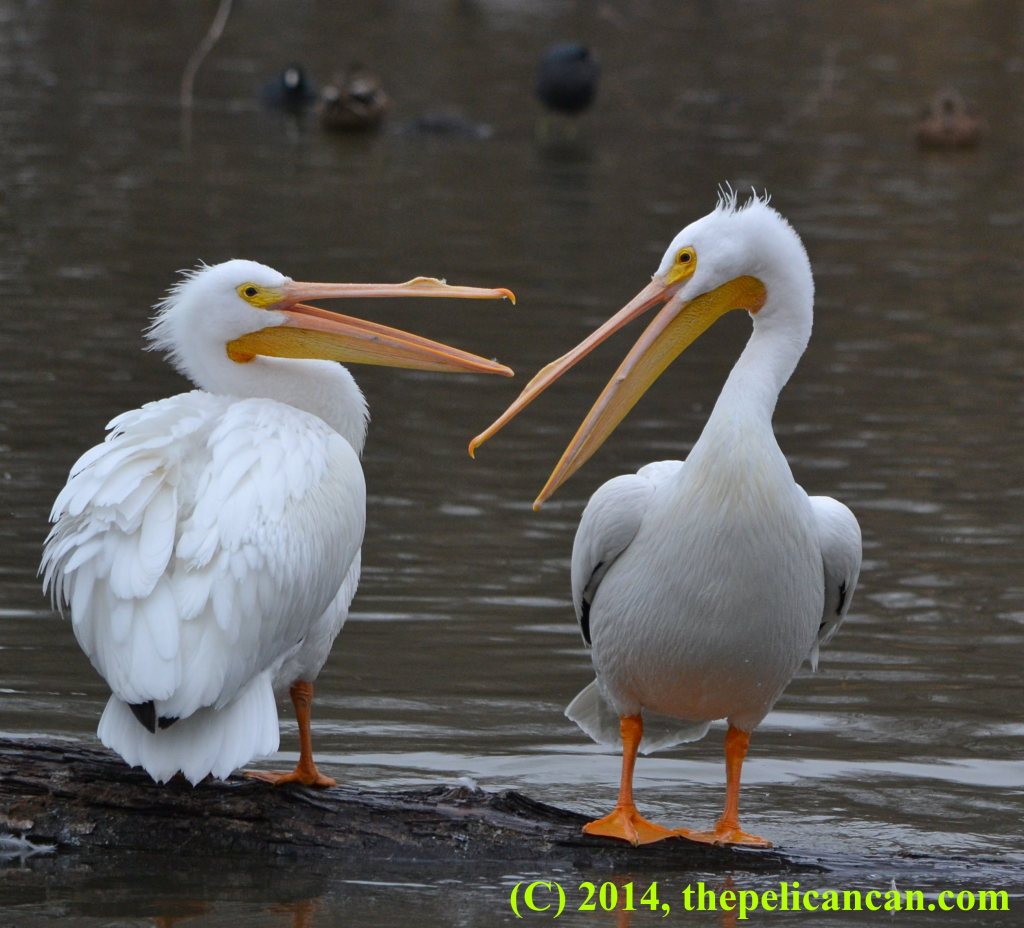
I can sell you some beautiful land in Florida. Beautiful rolling land. Called Black Creek. You’ve got to act fast, though . . .
A few birds were still coming in, but the birds who were established on the logs were preening or sleeping. My toes were numb and my fingers were cold. I went home to warm up.

